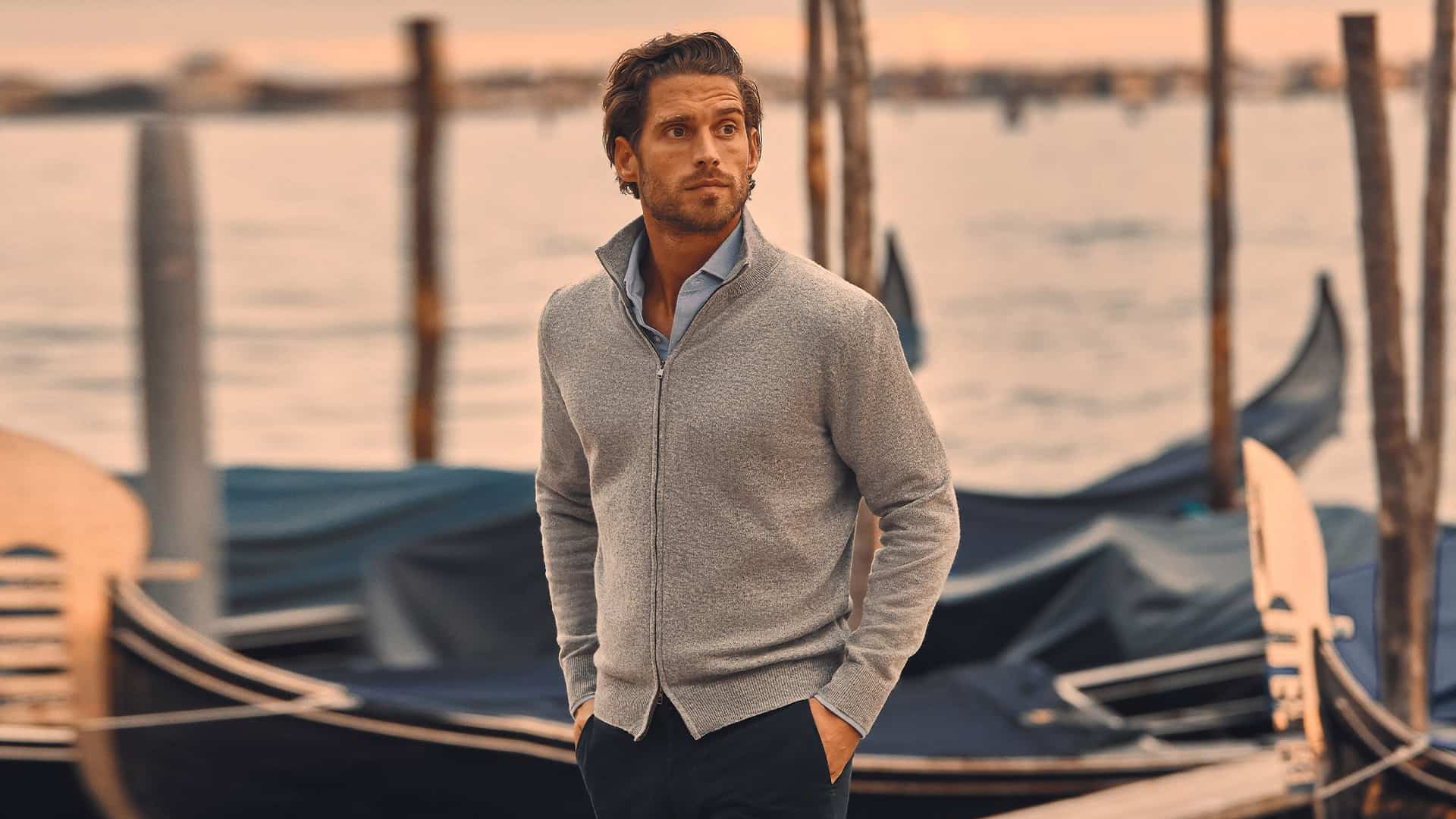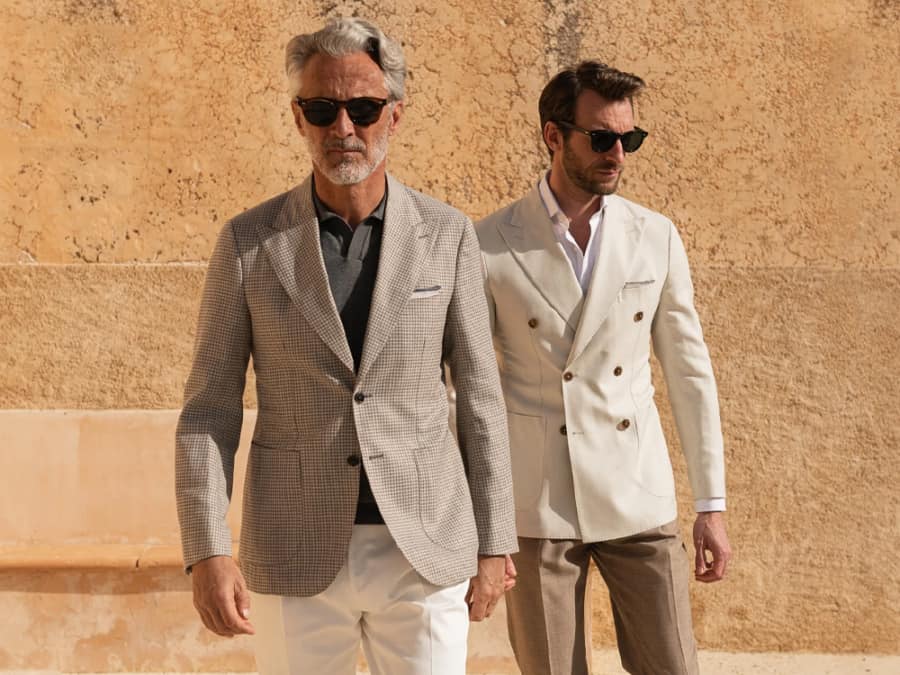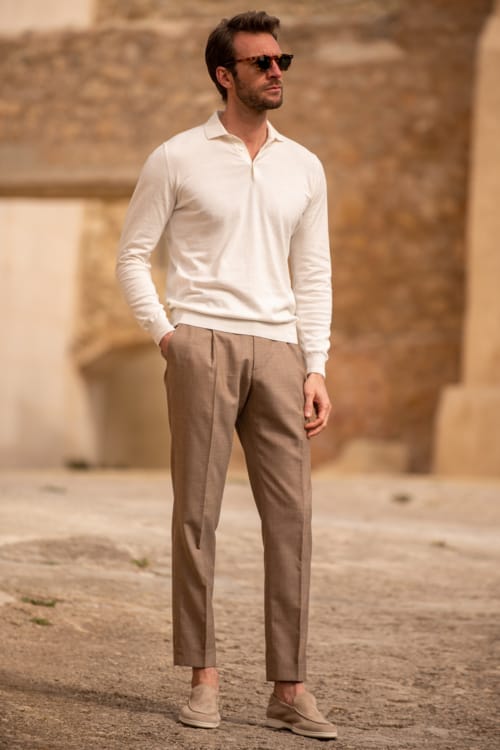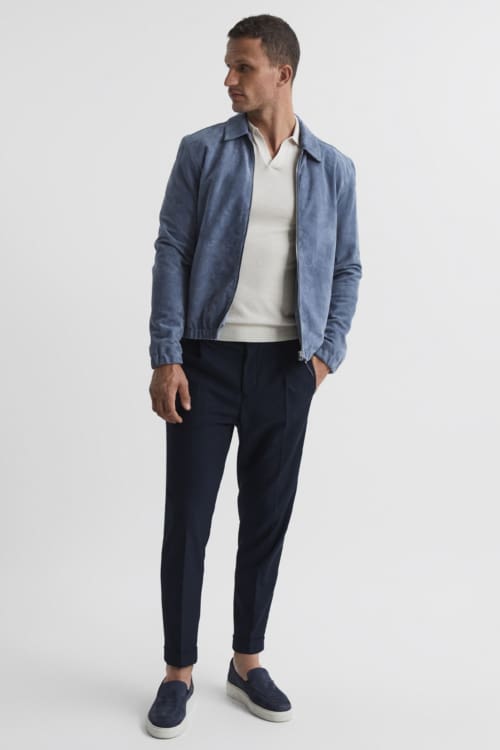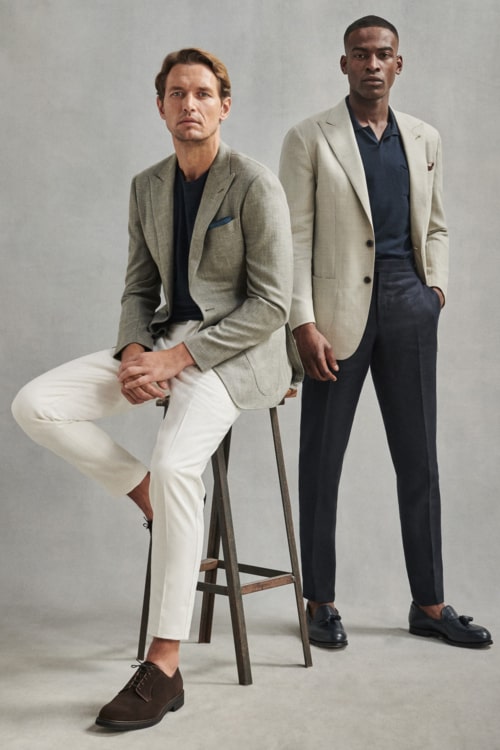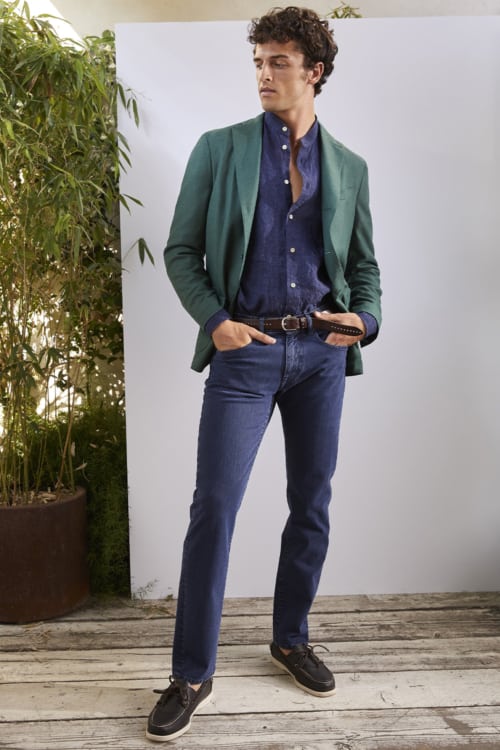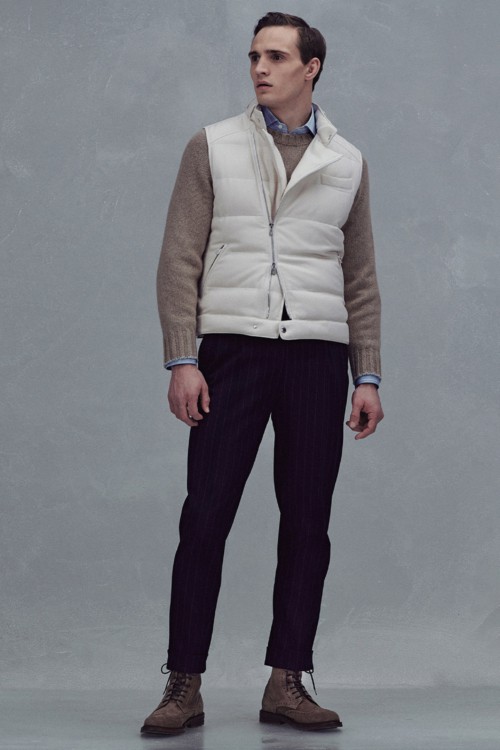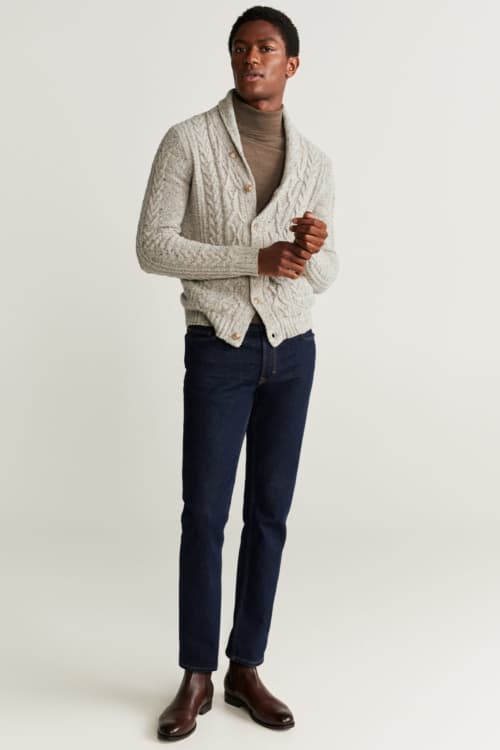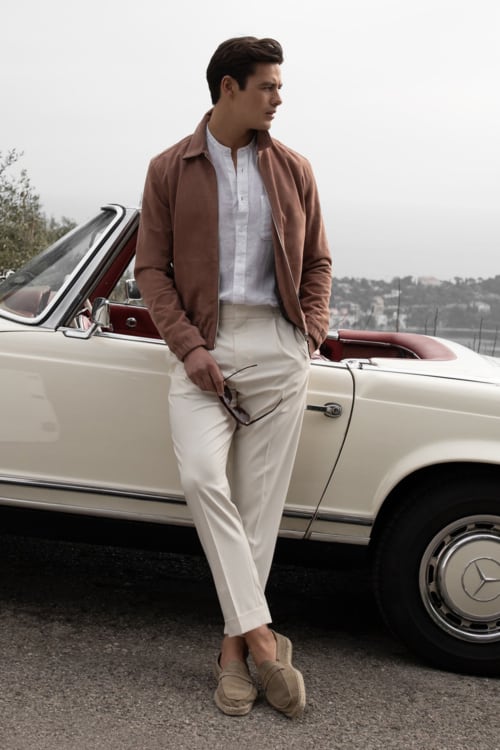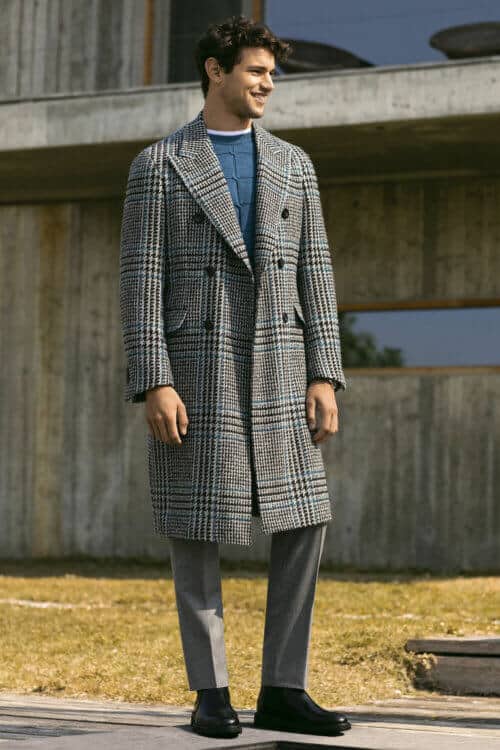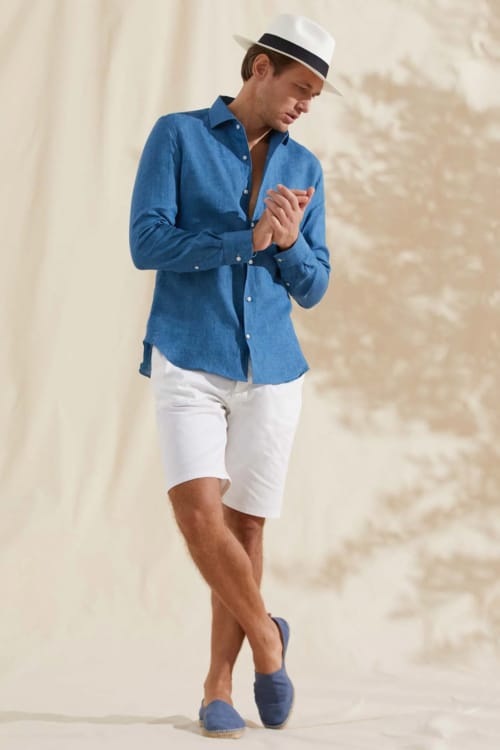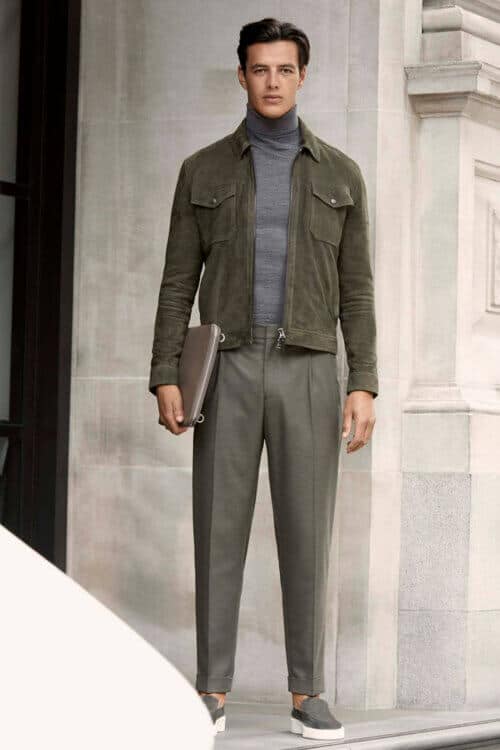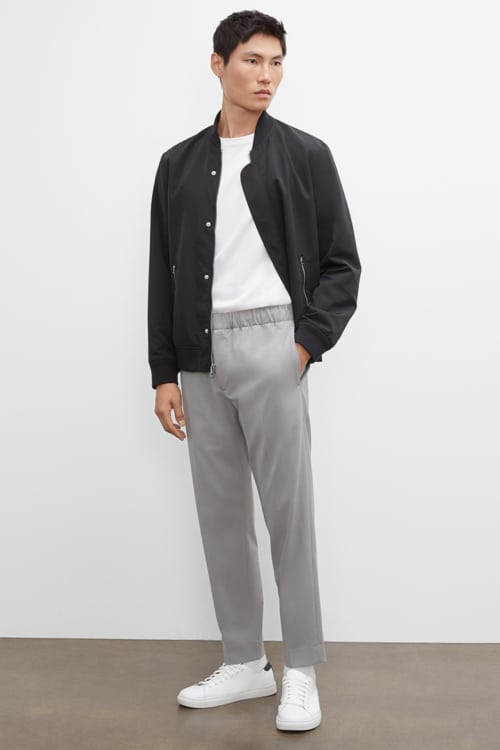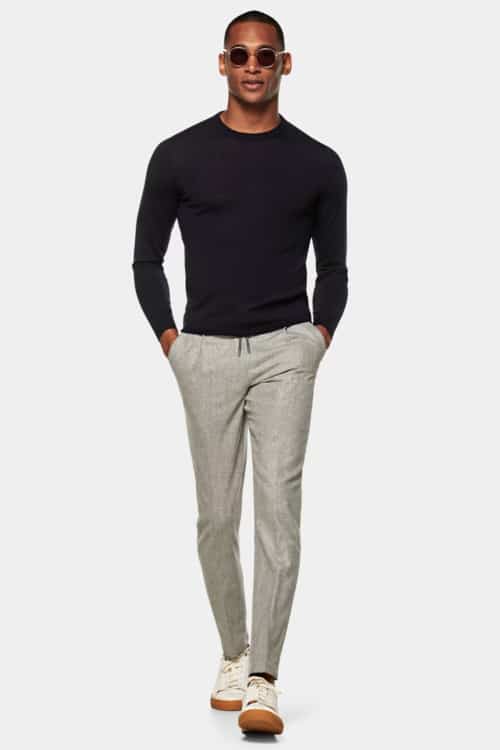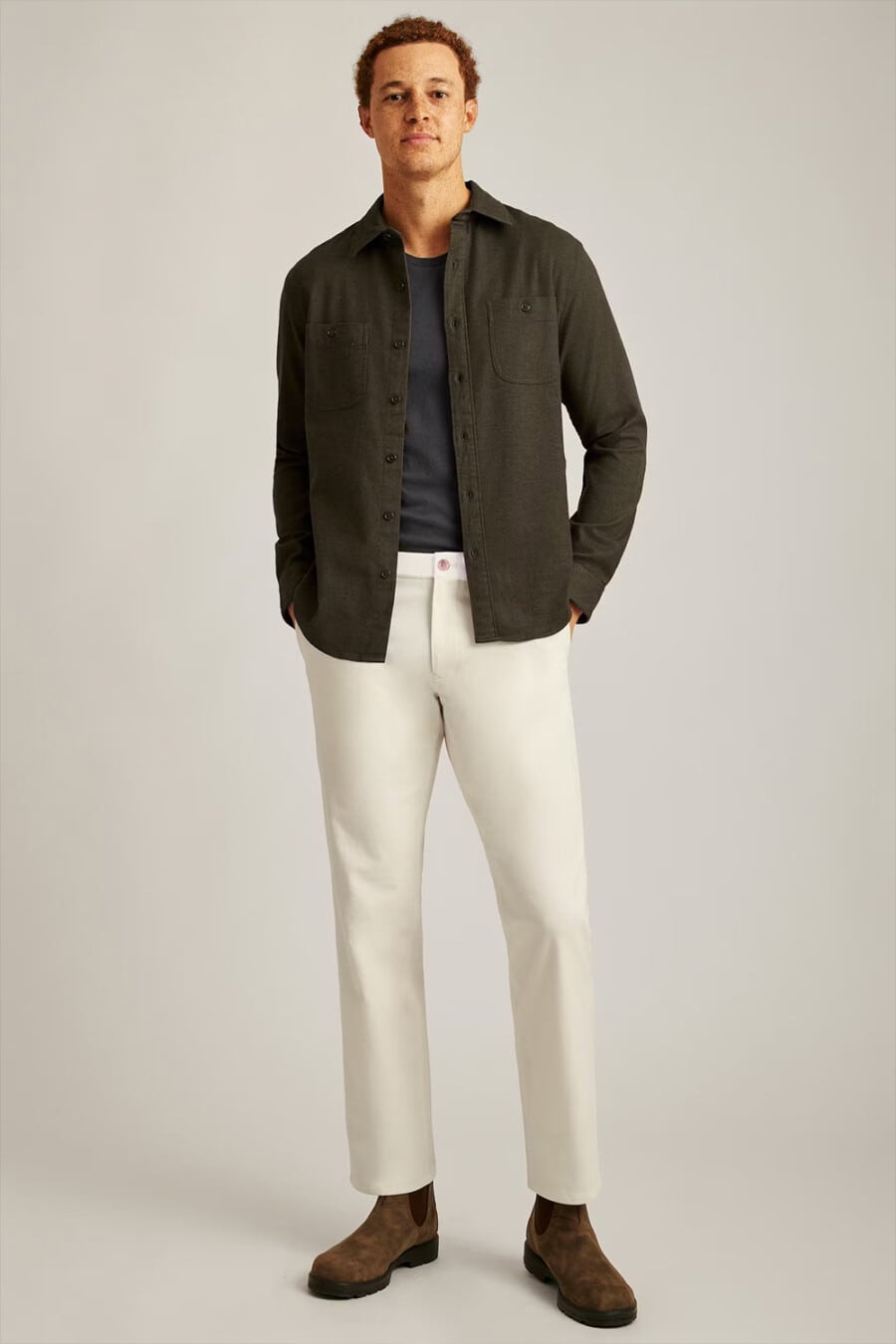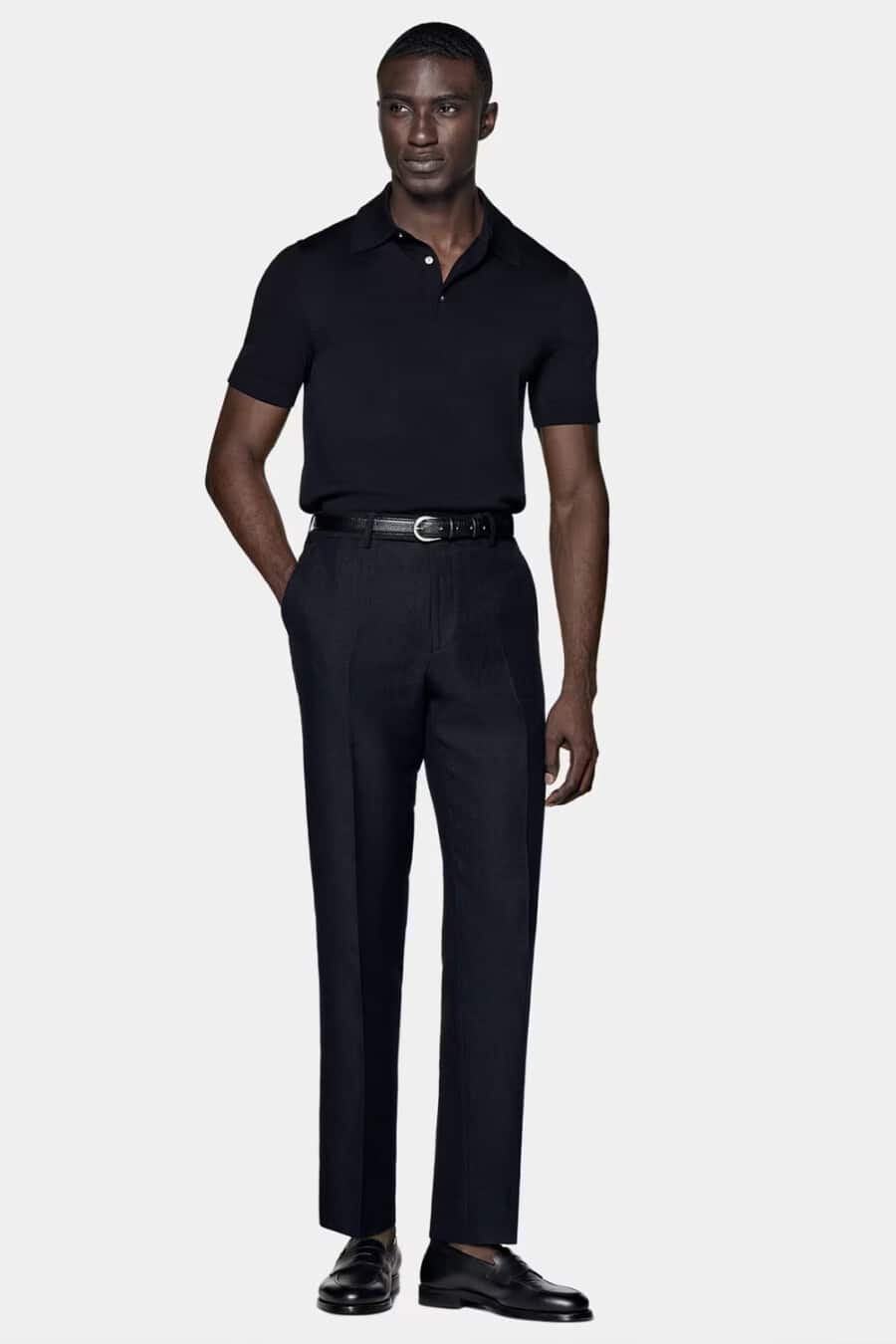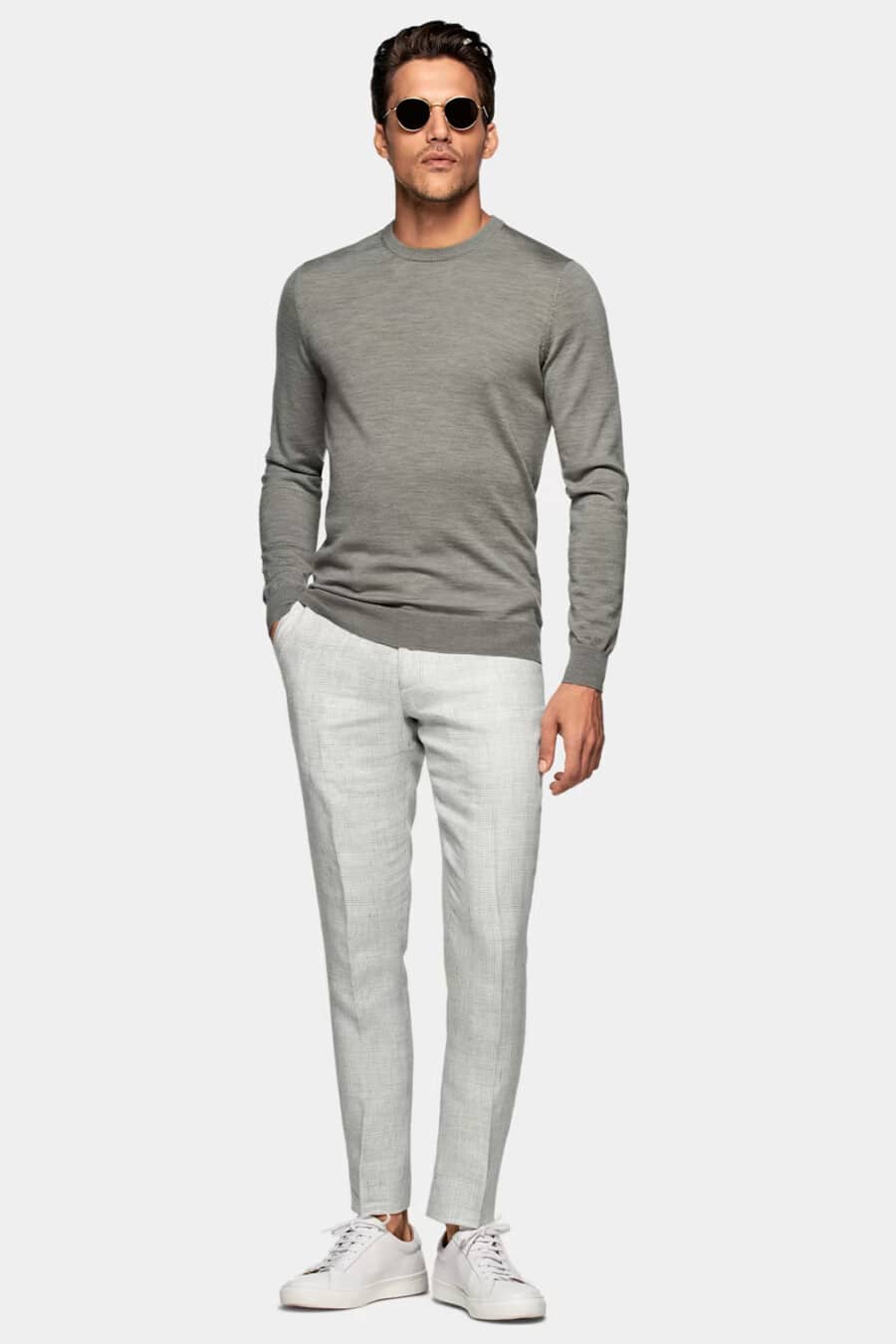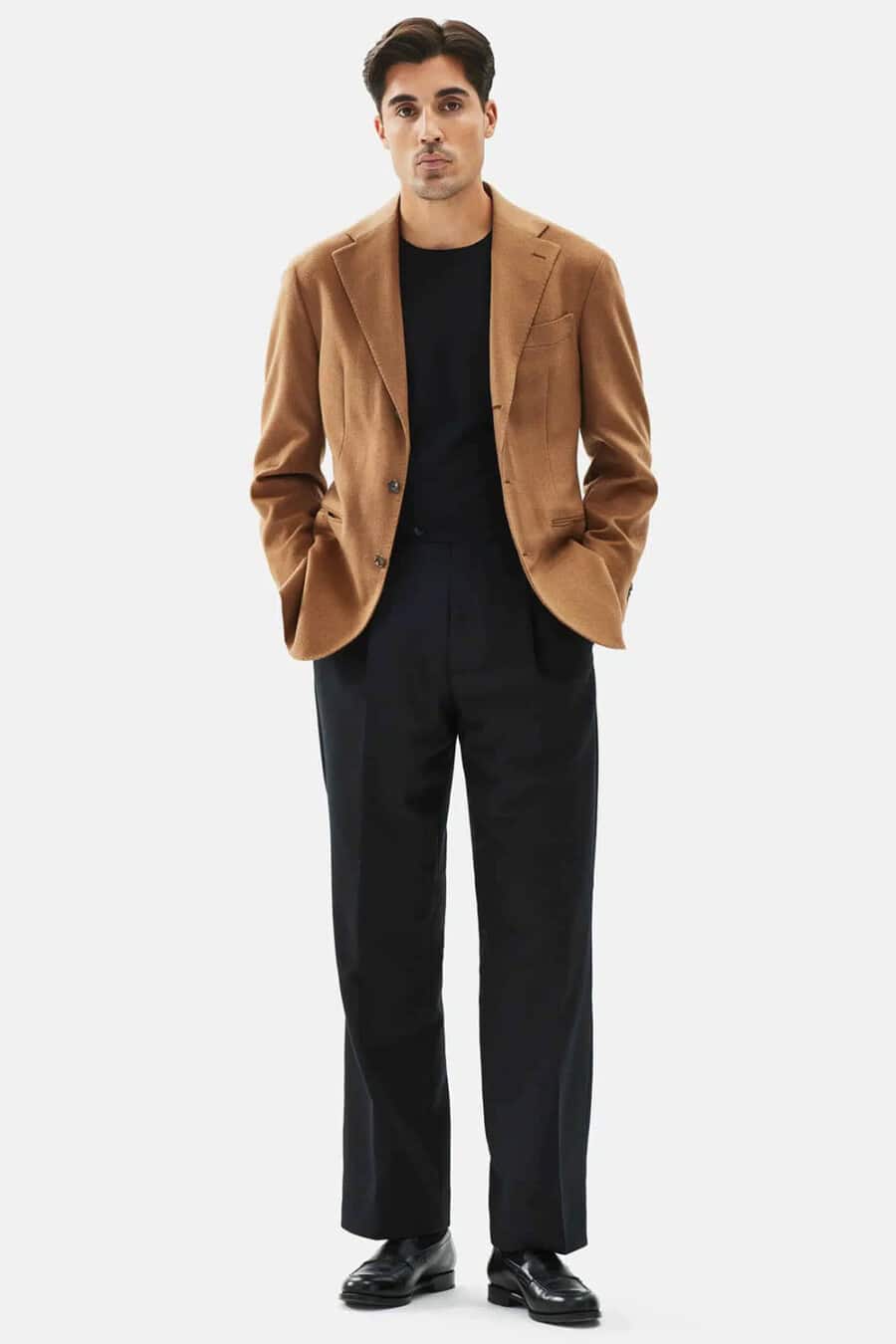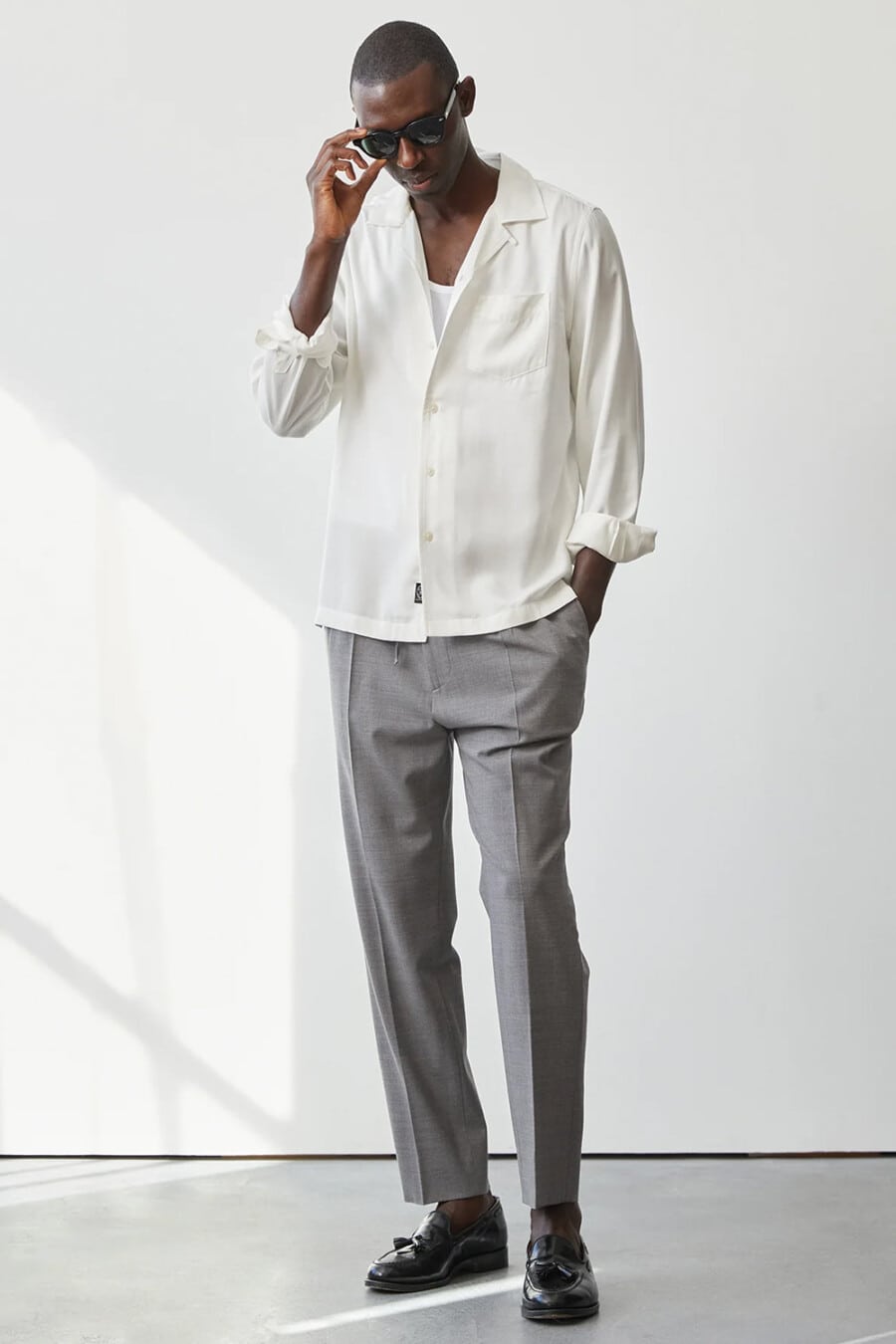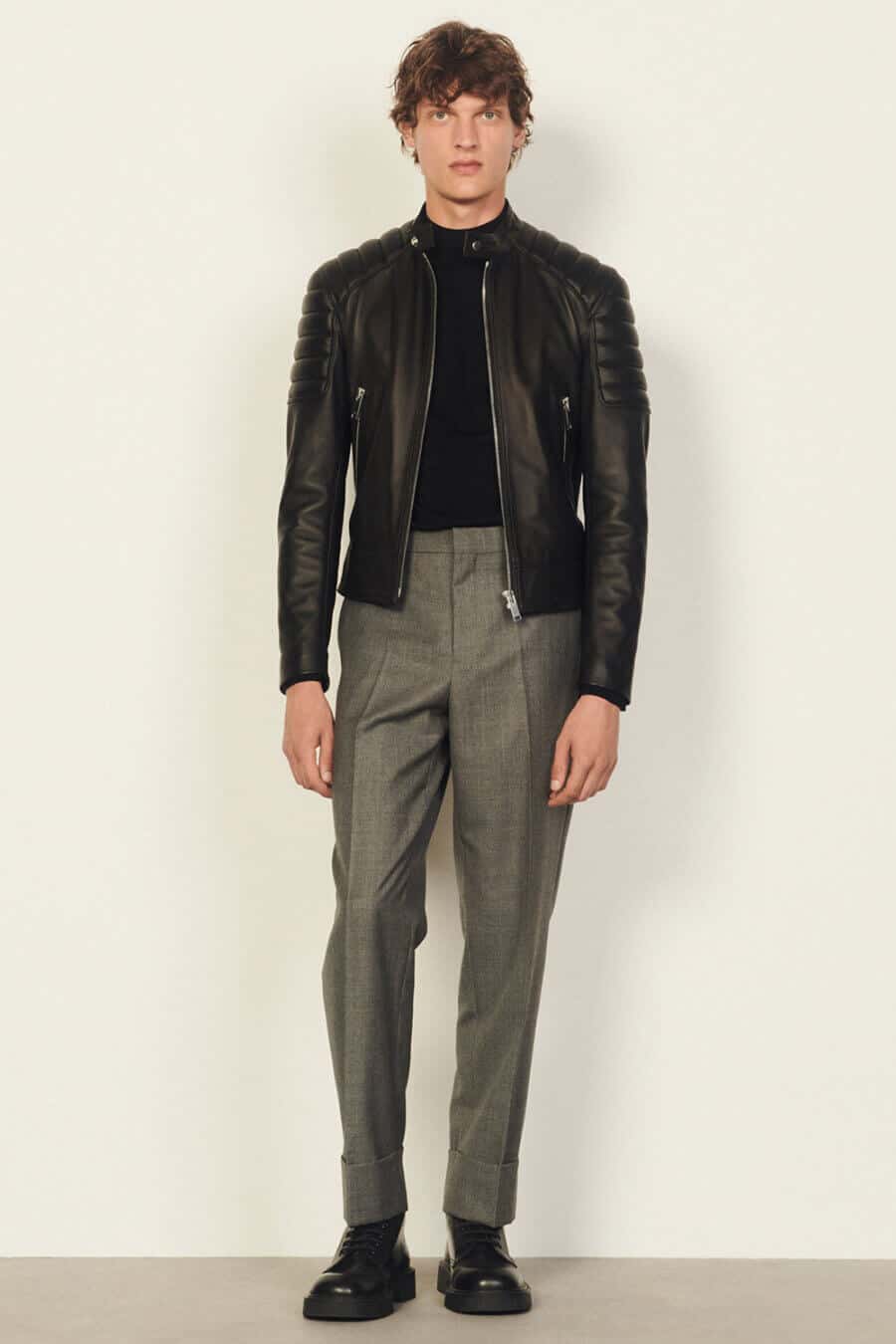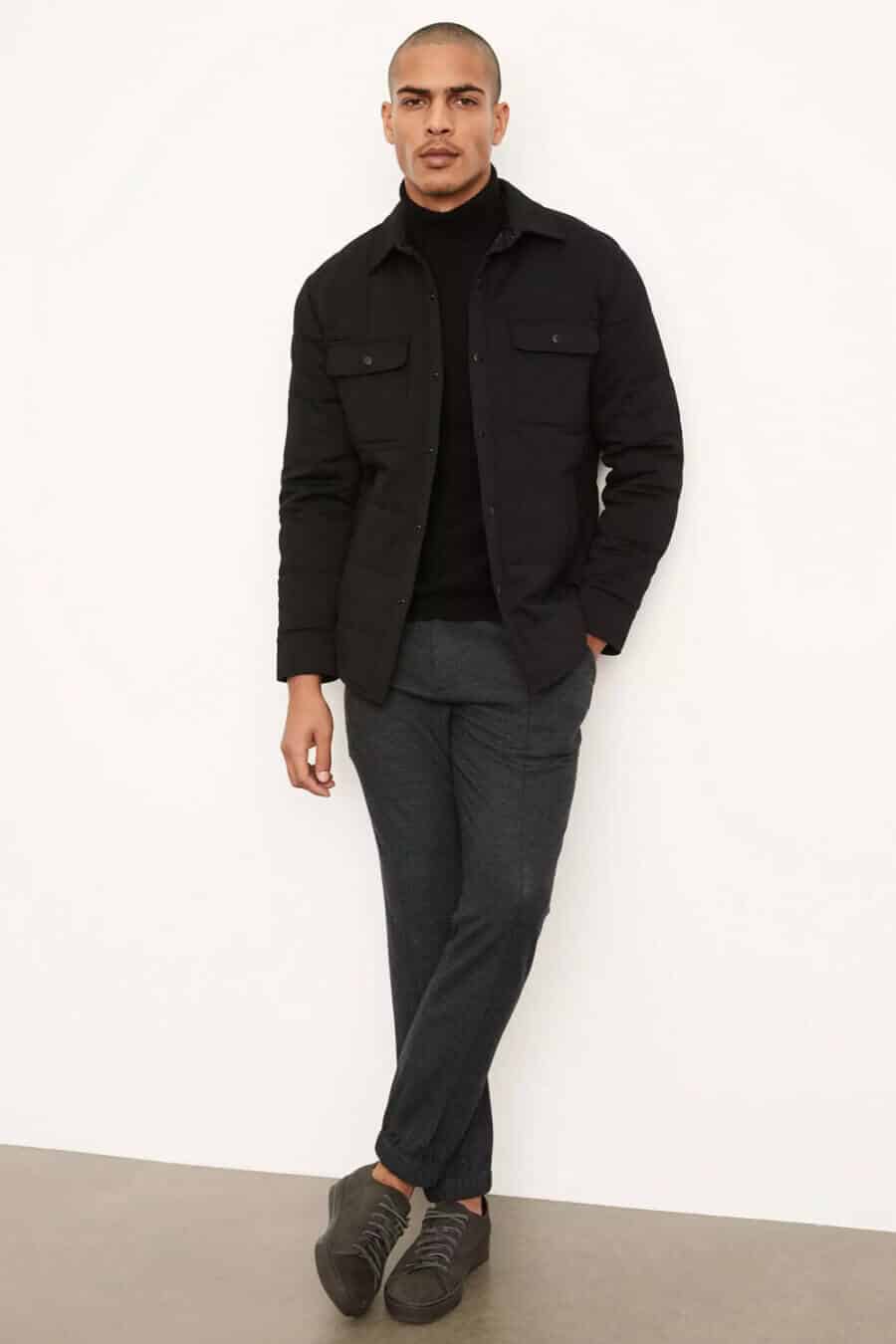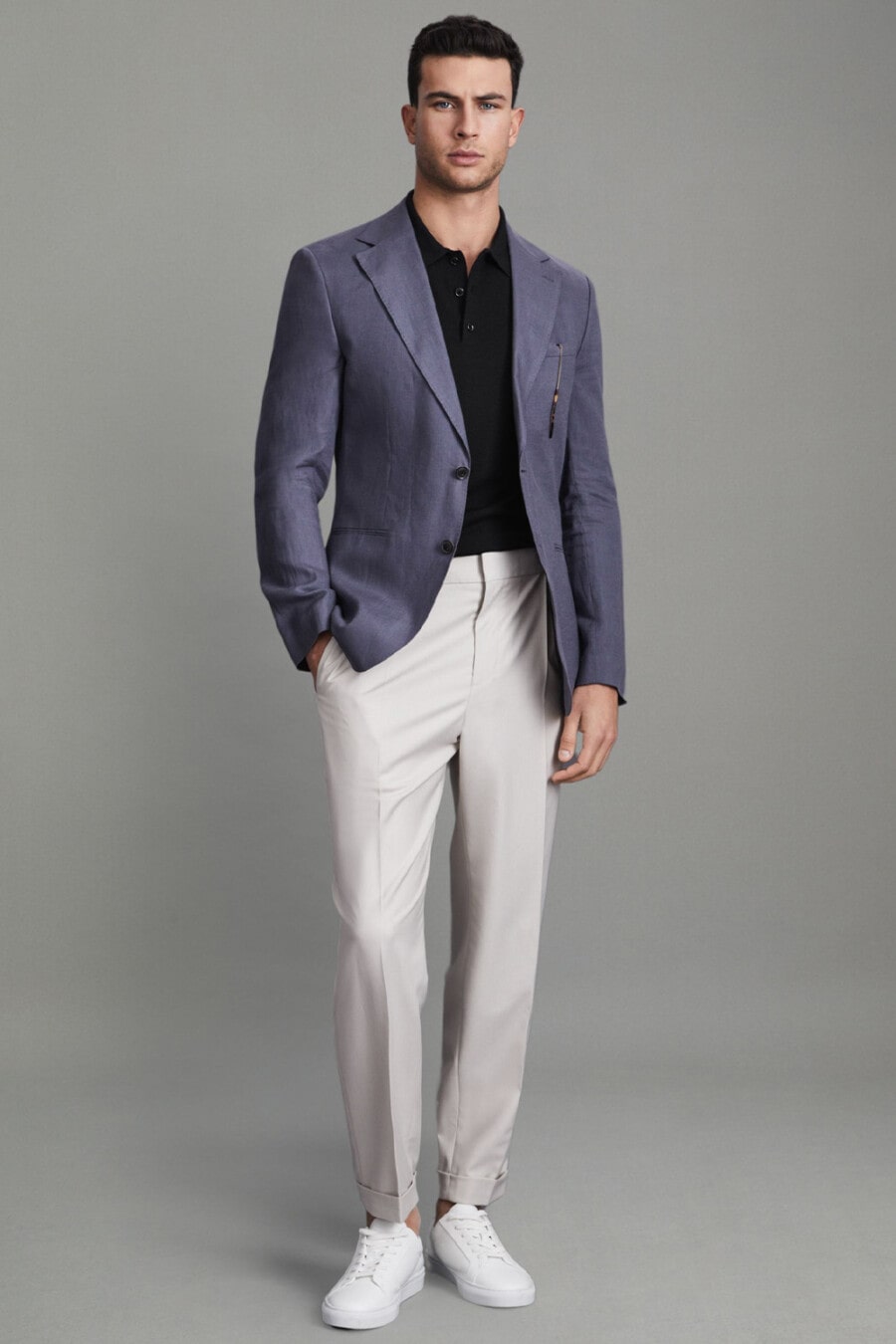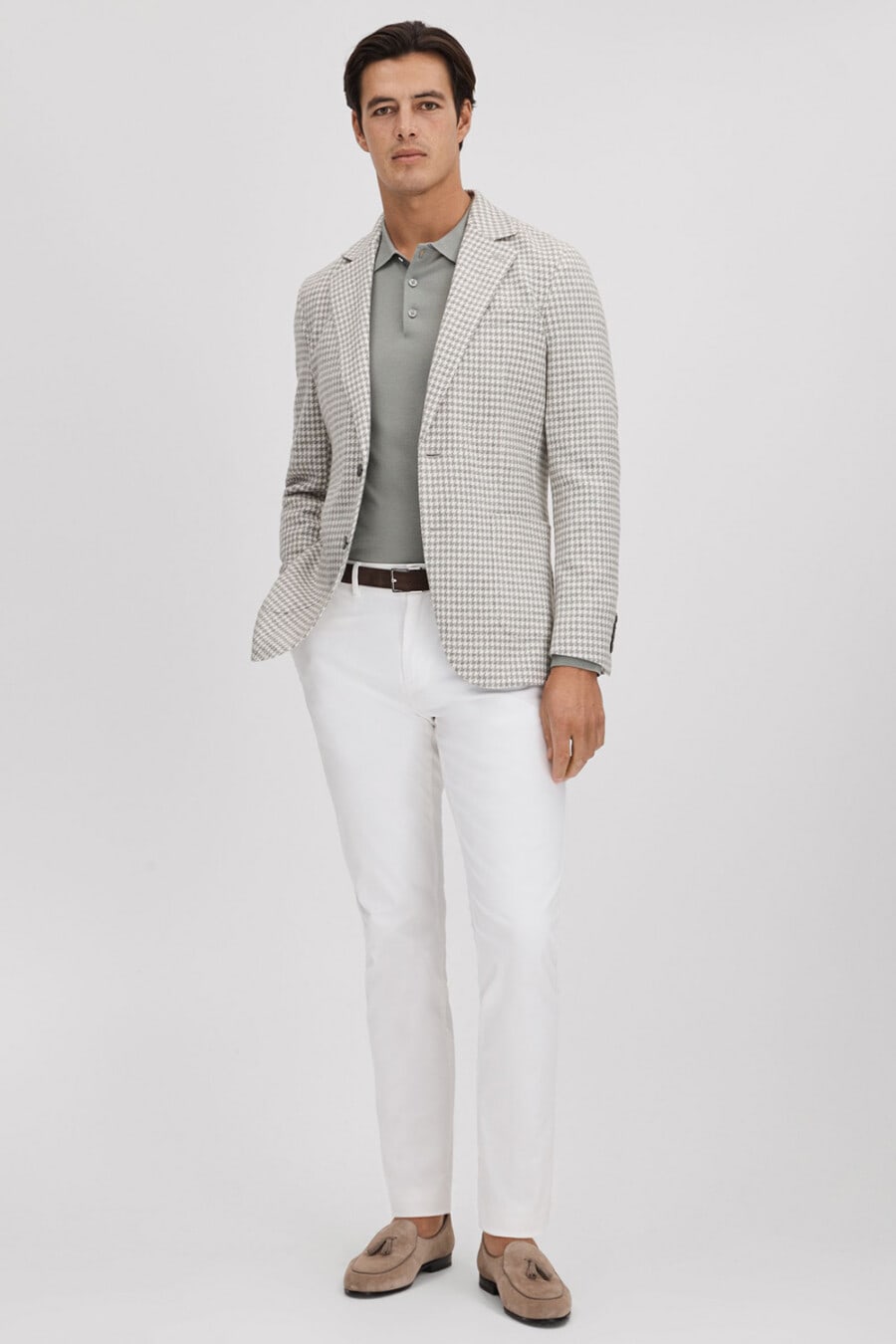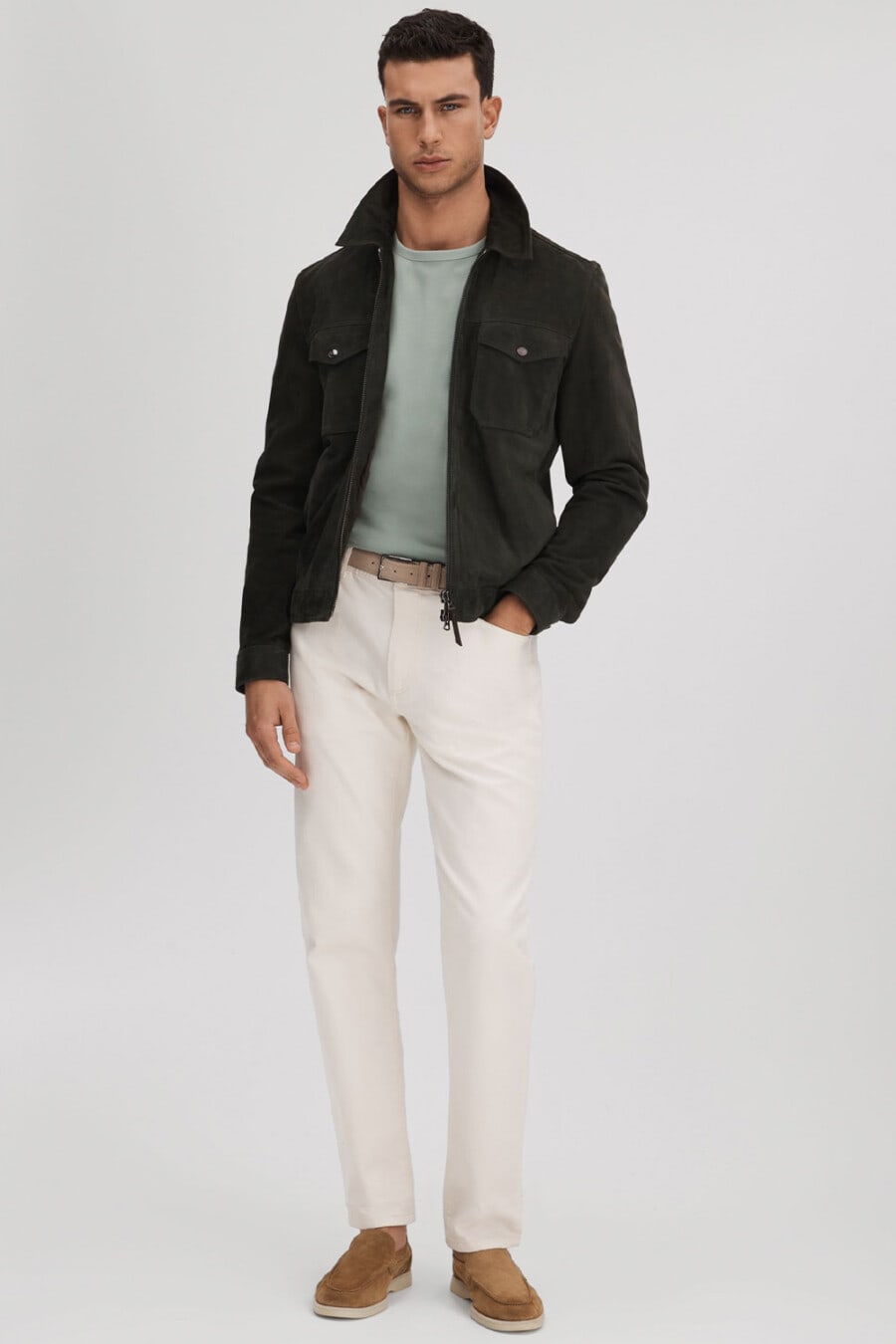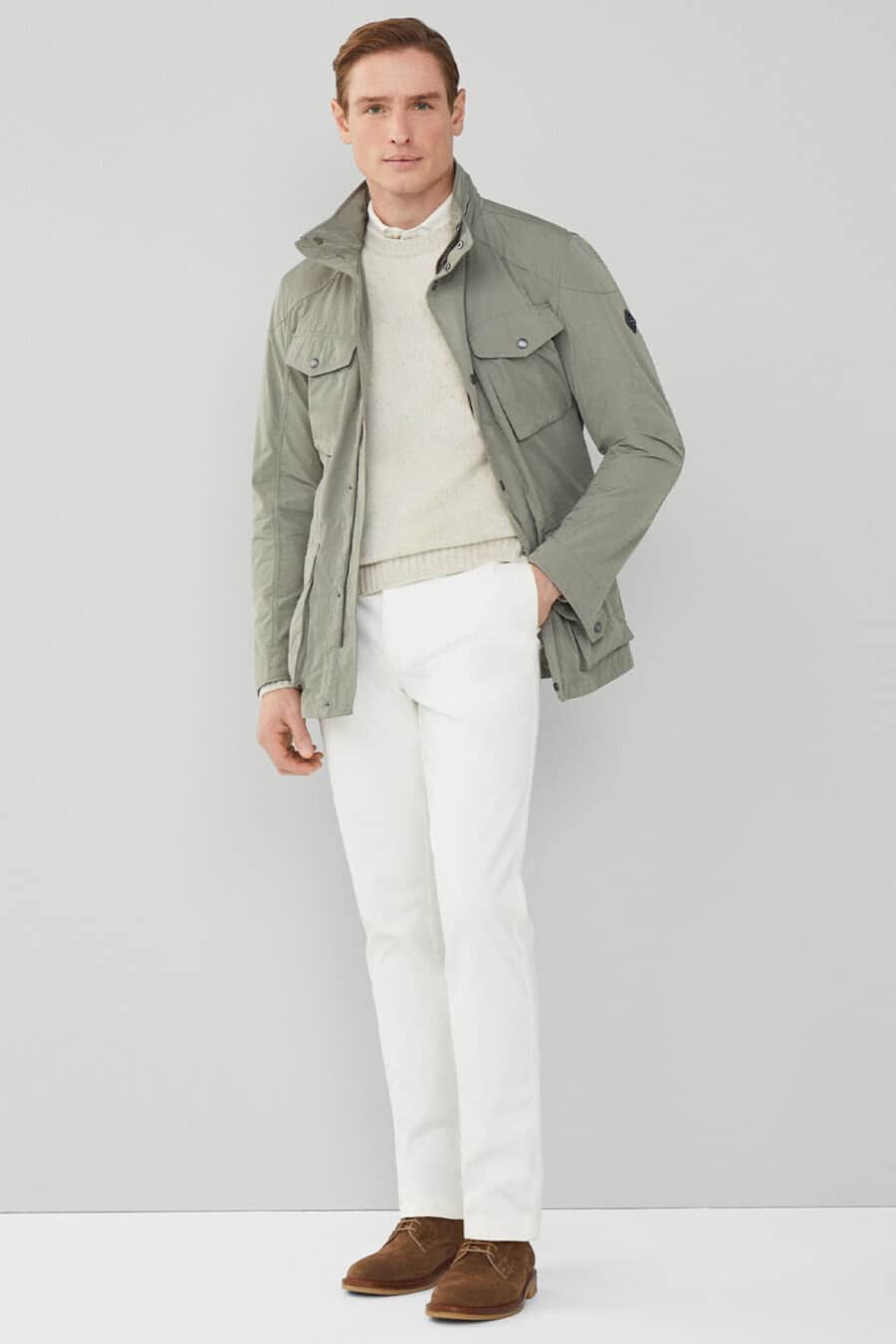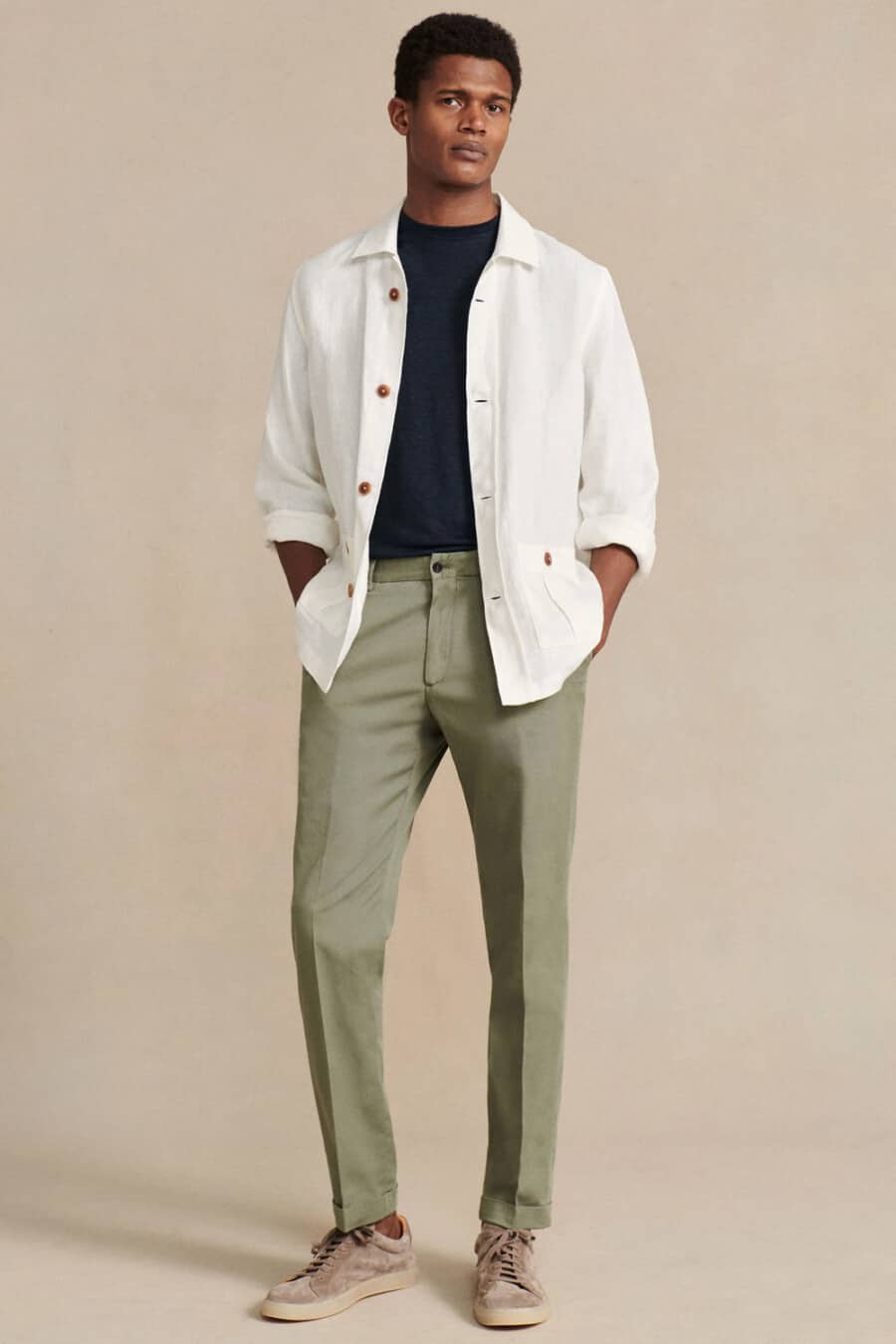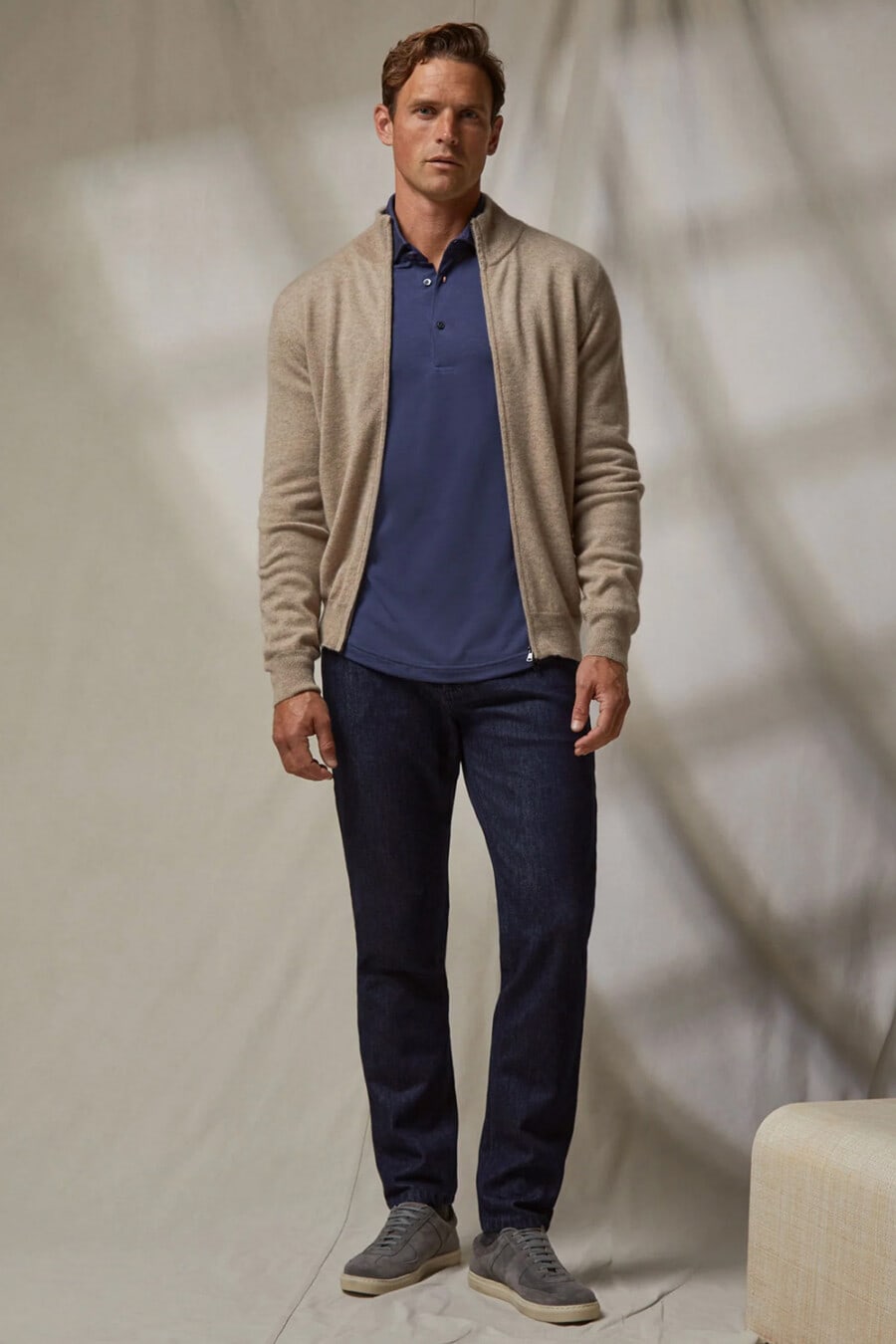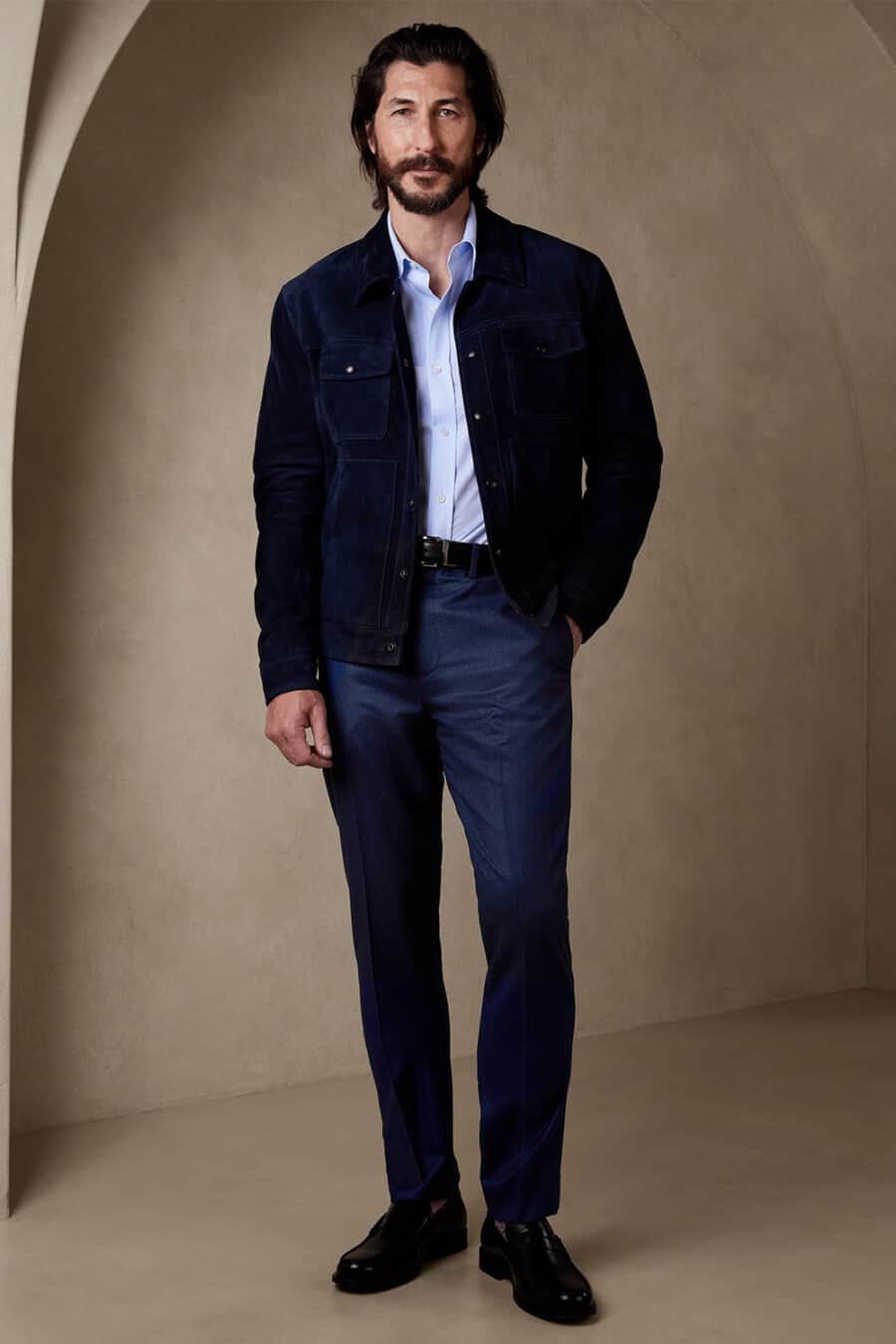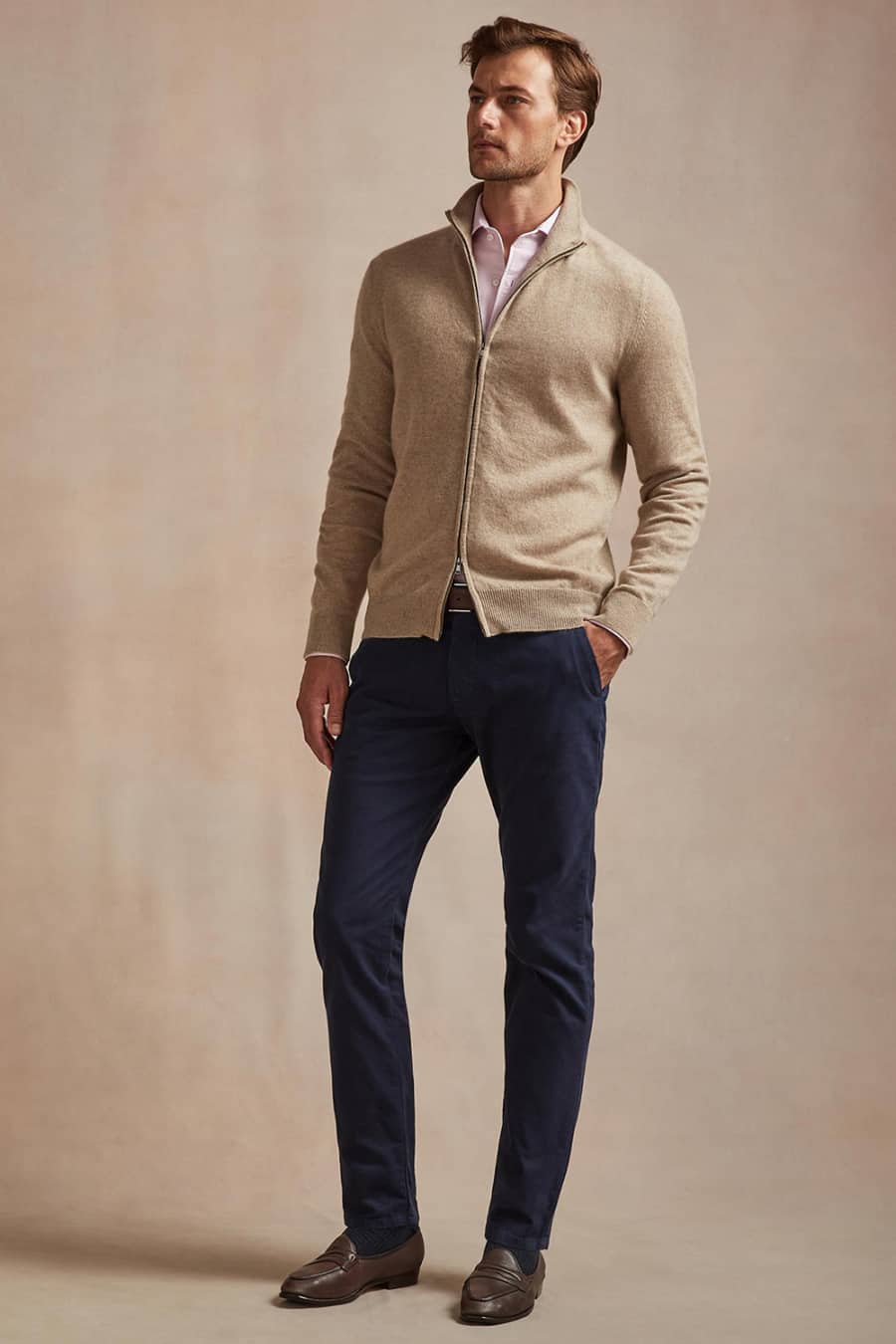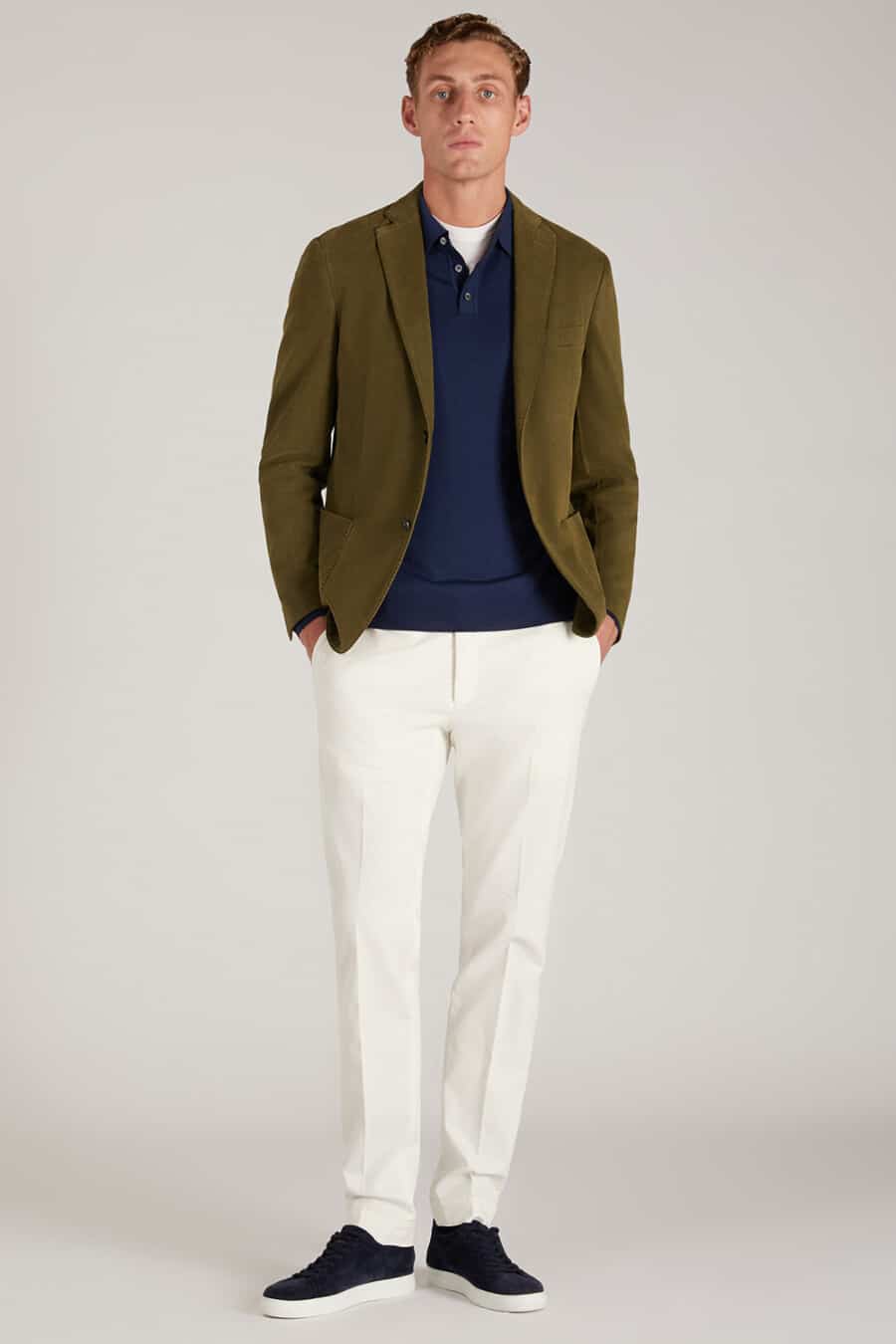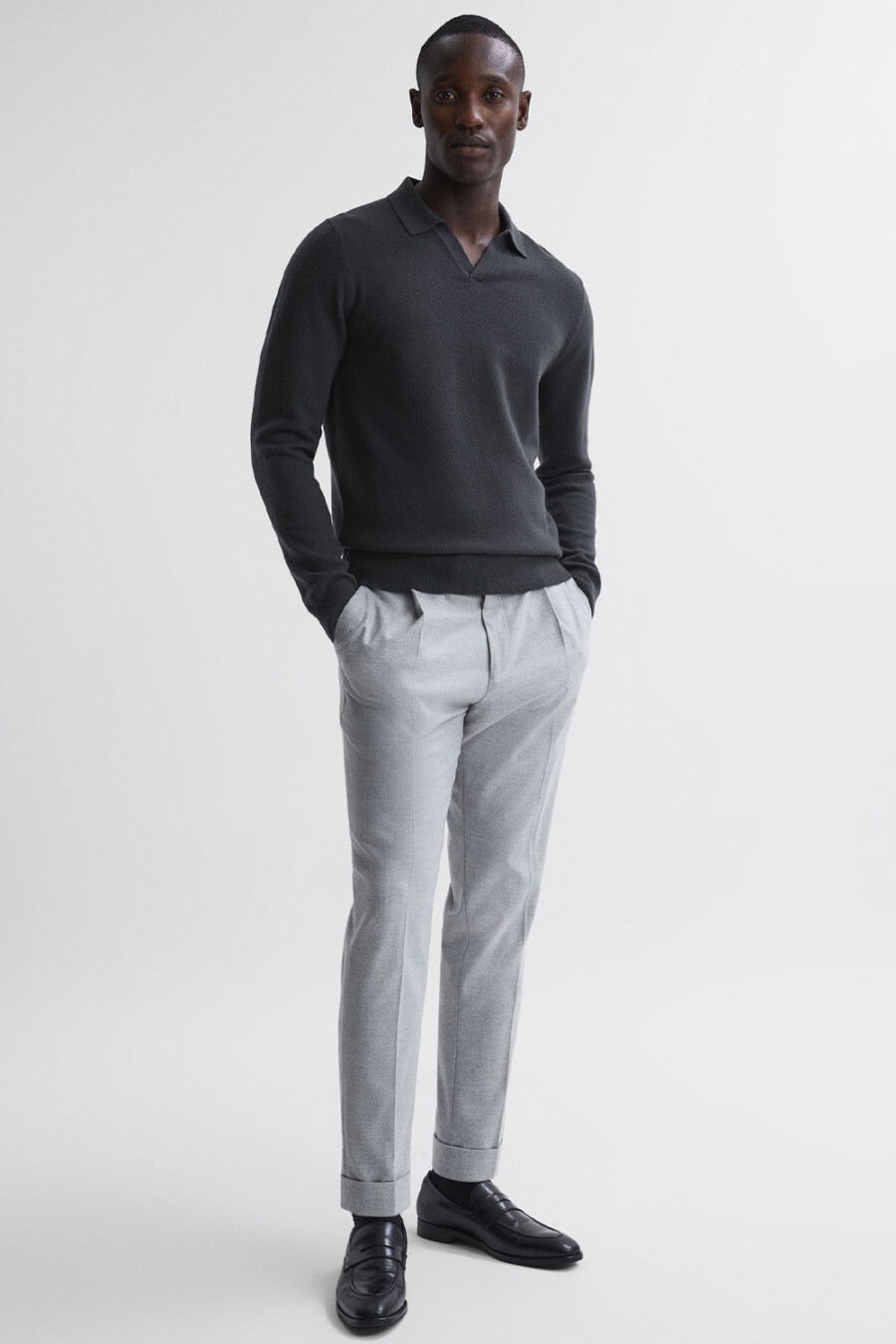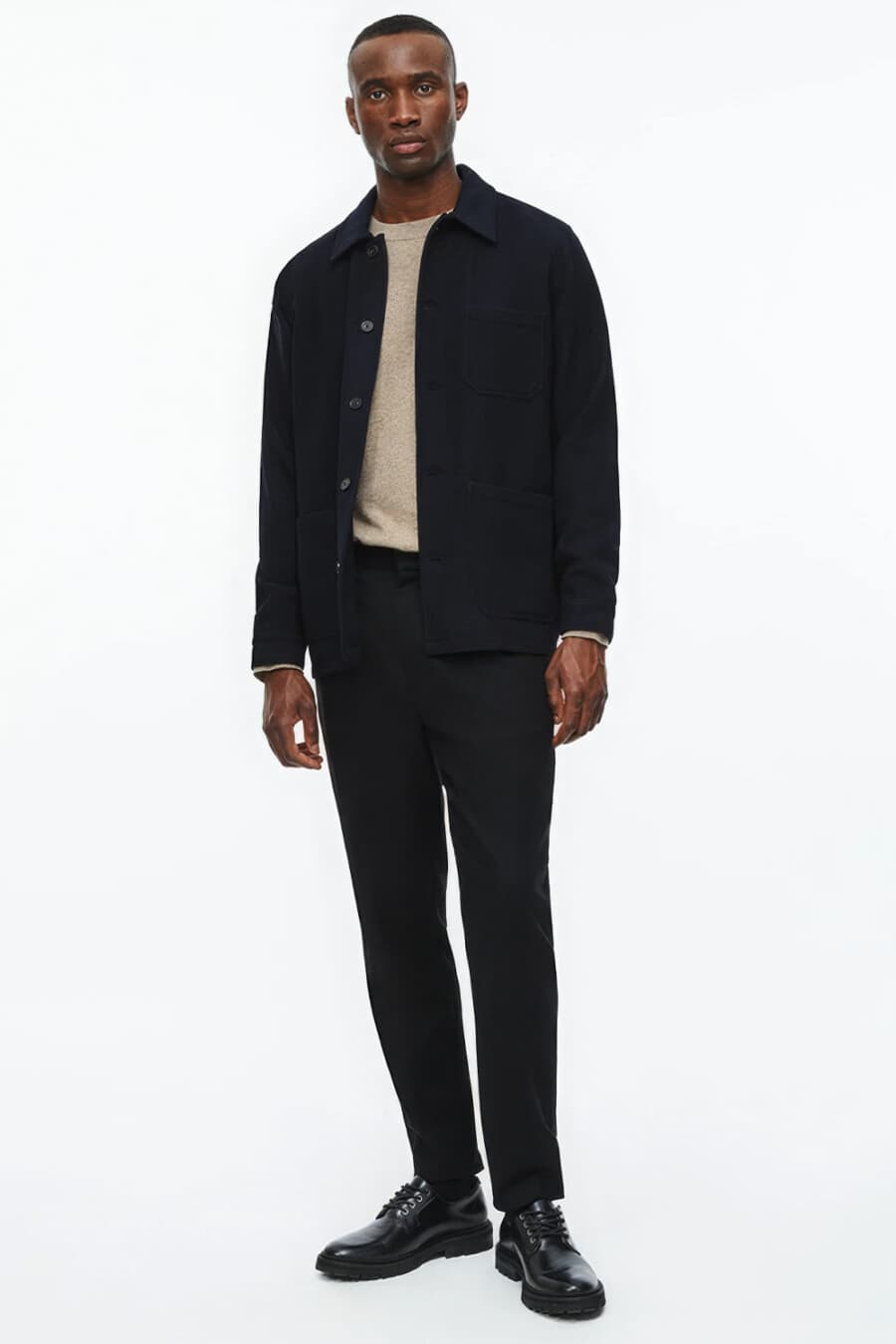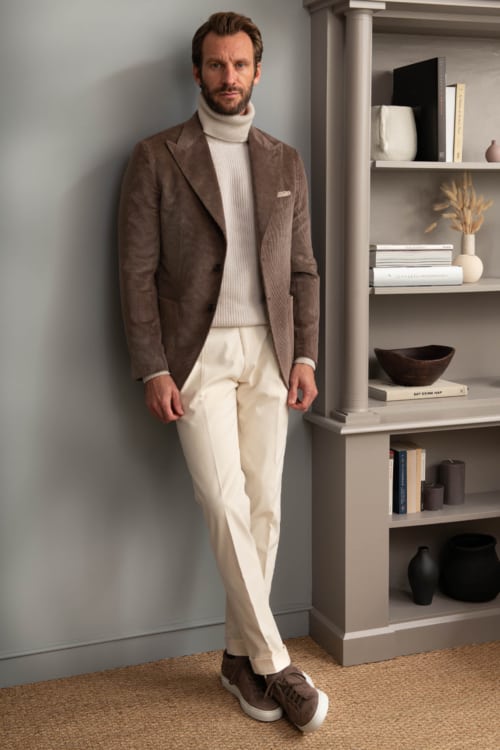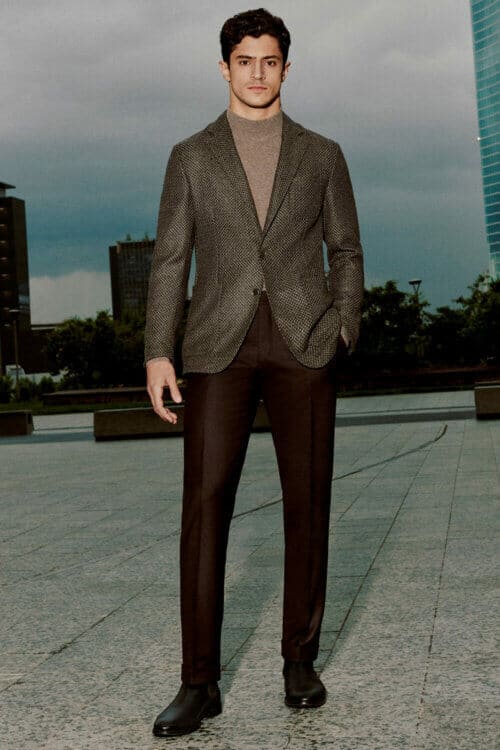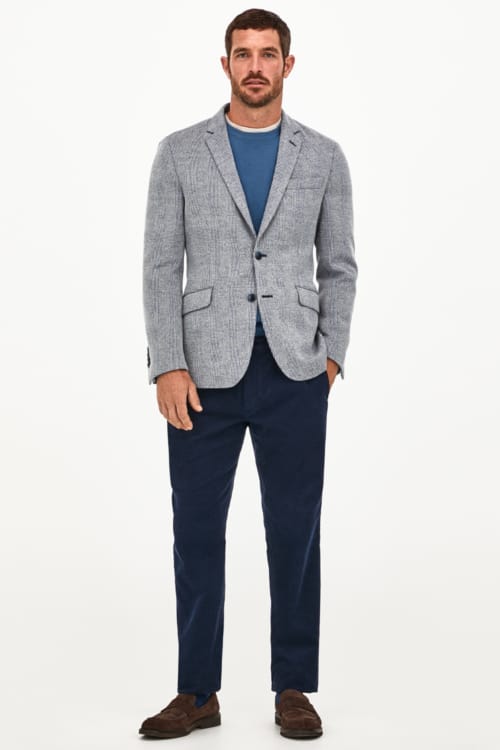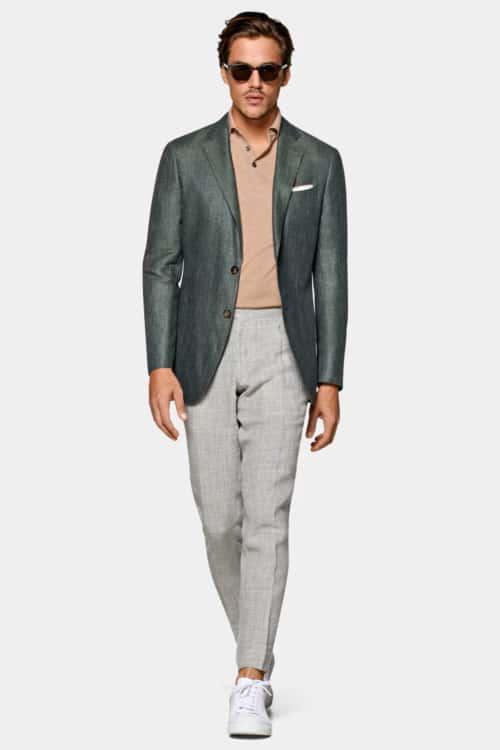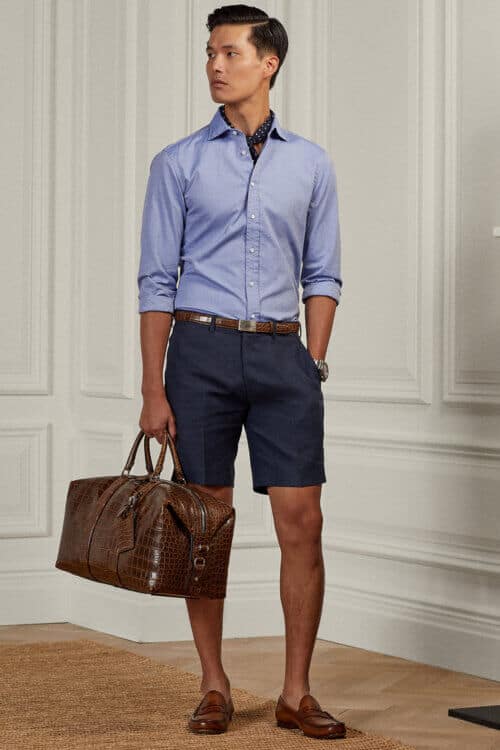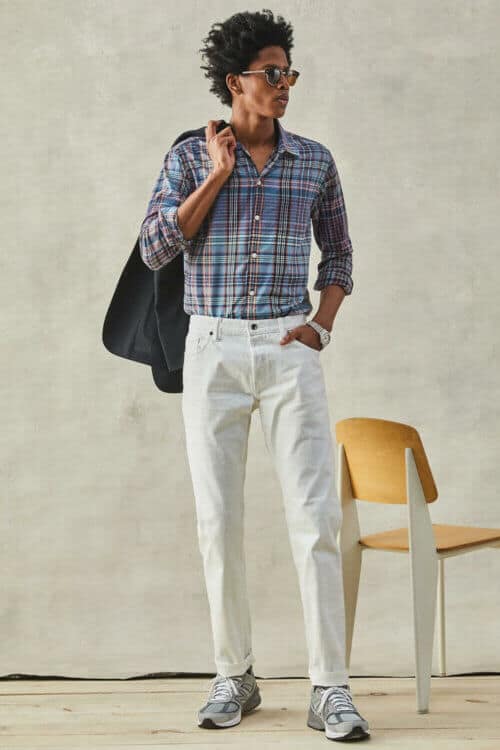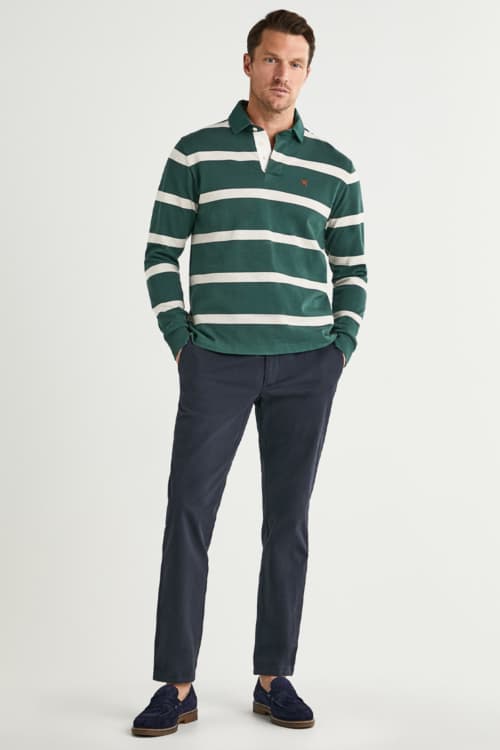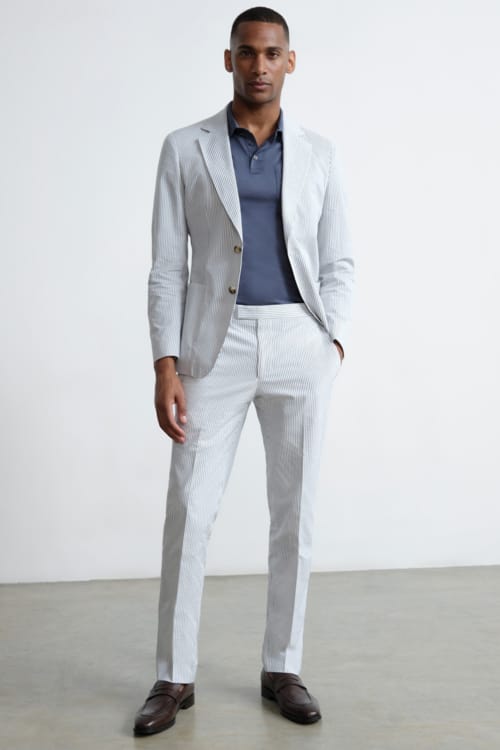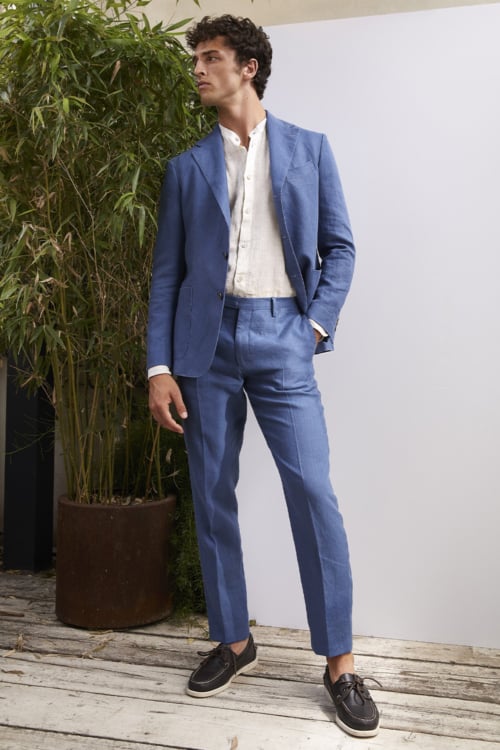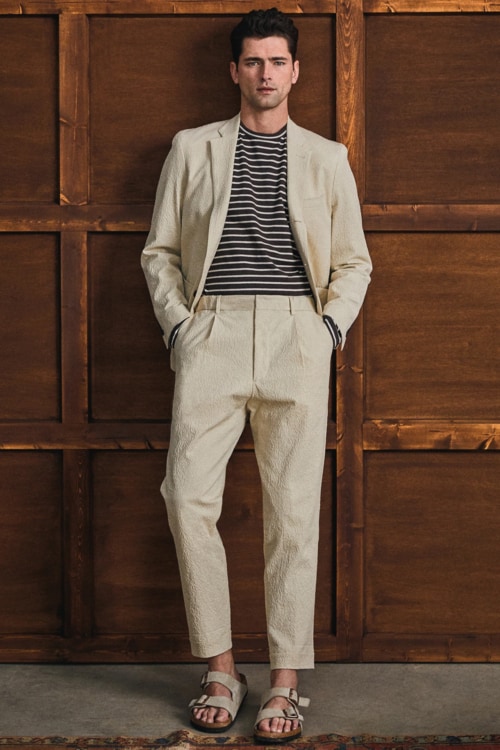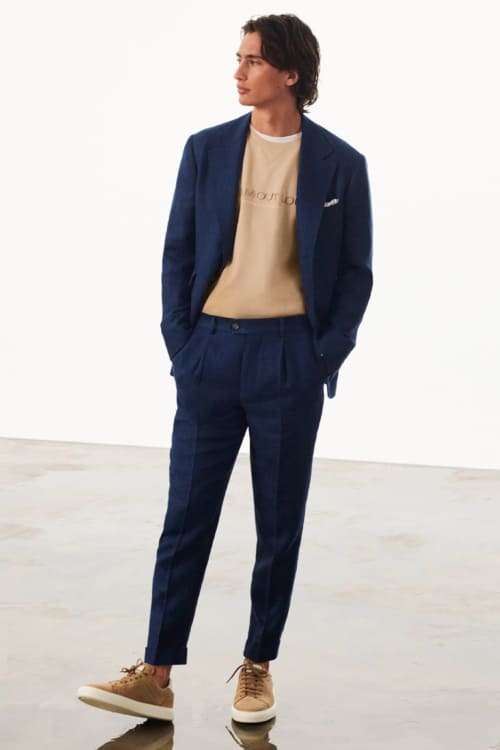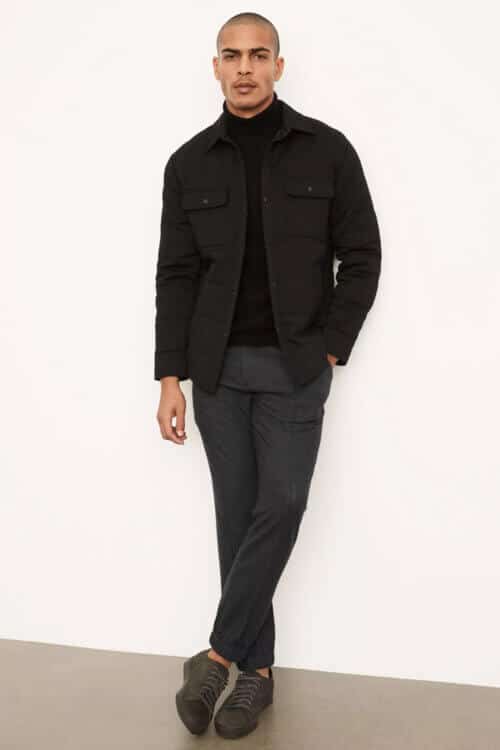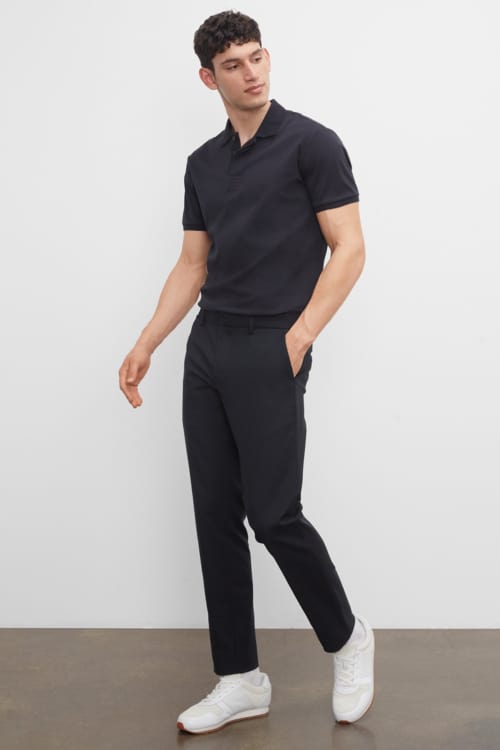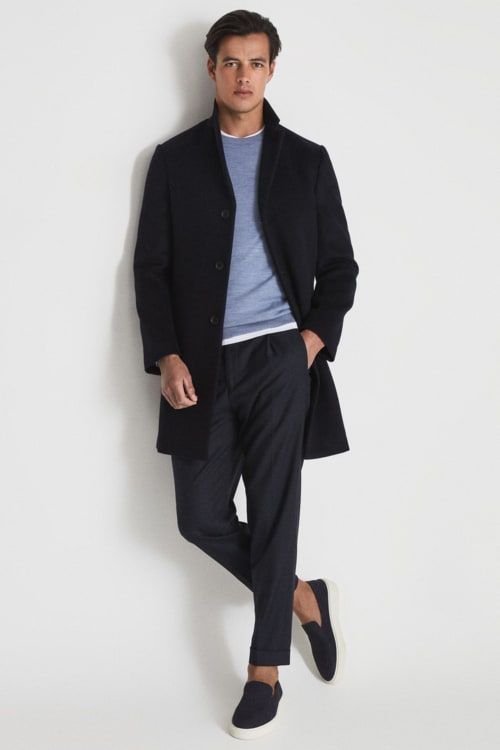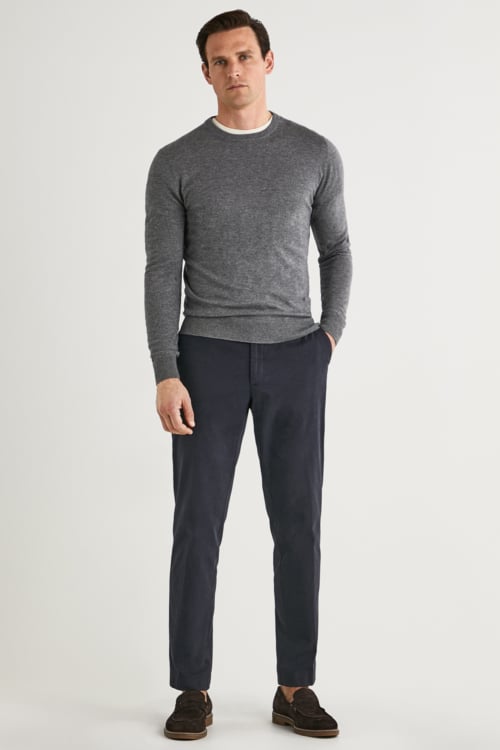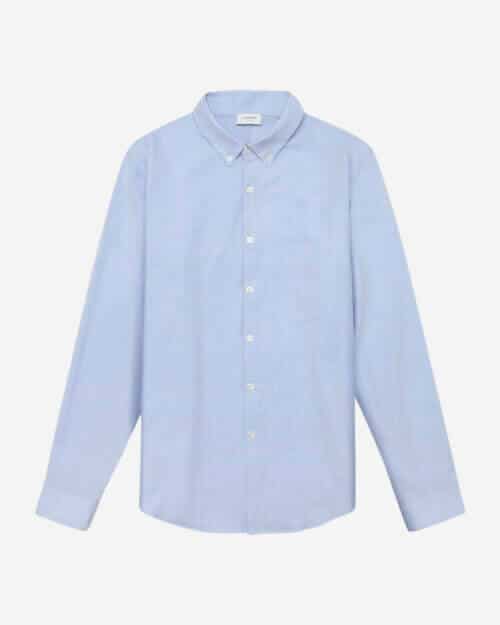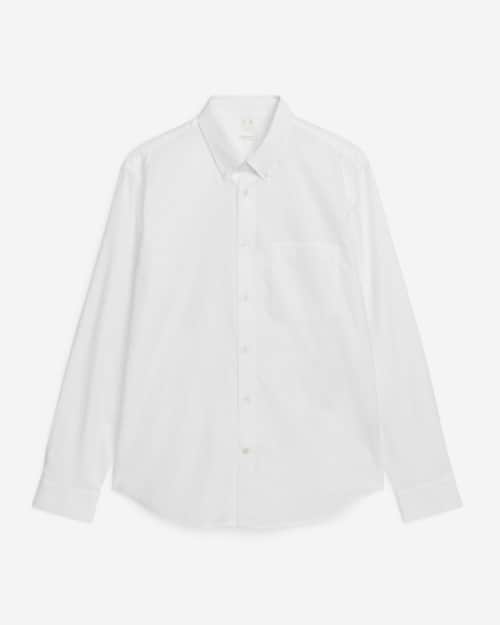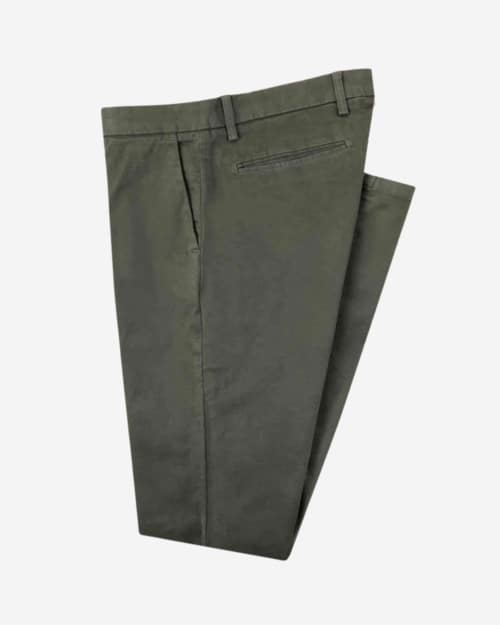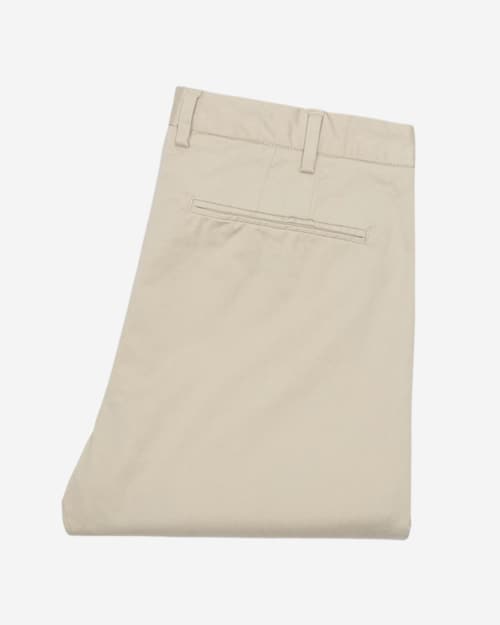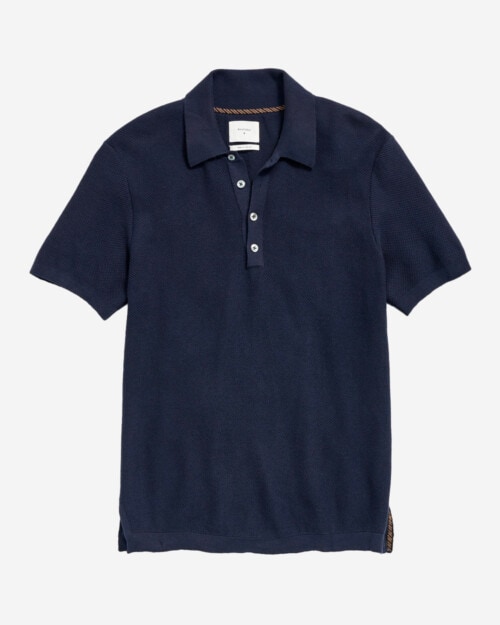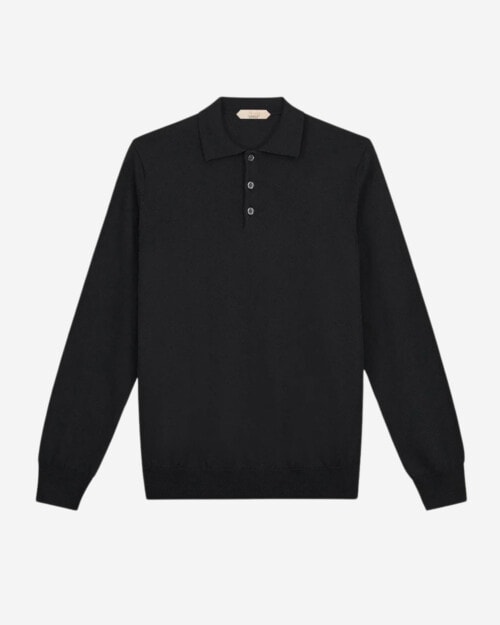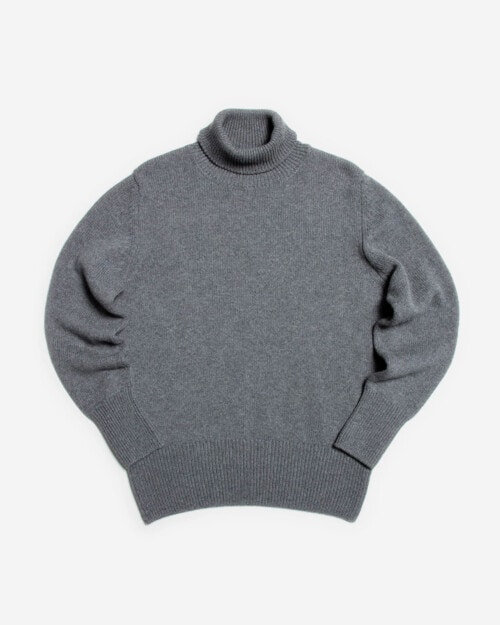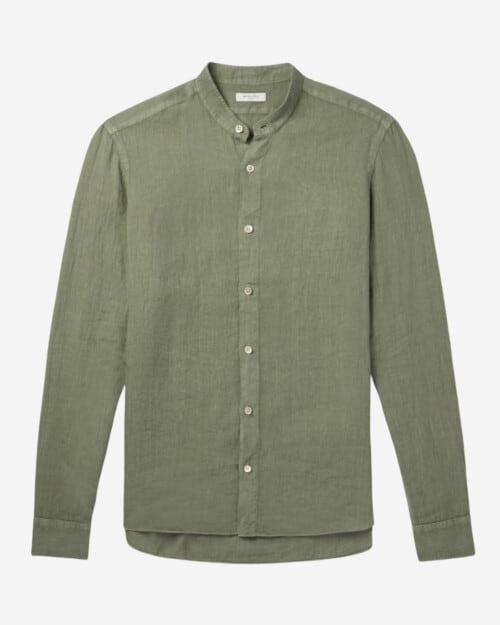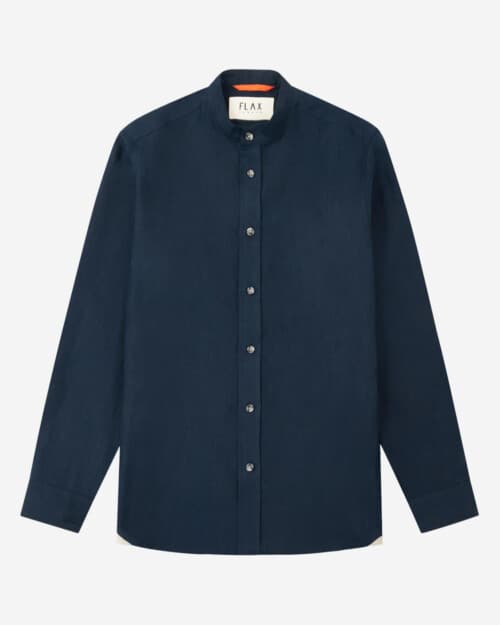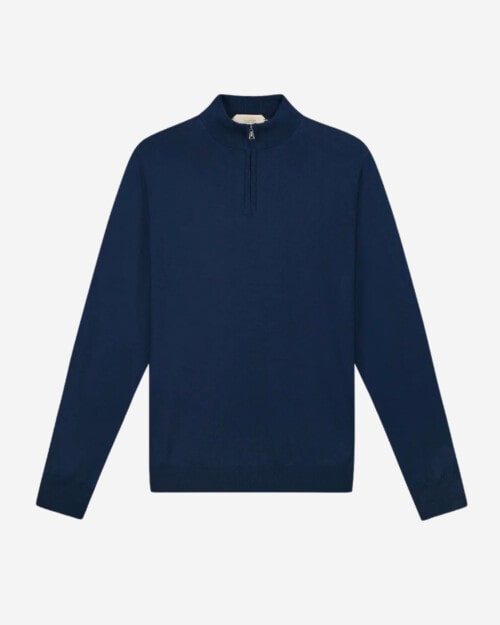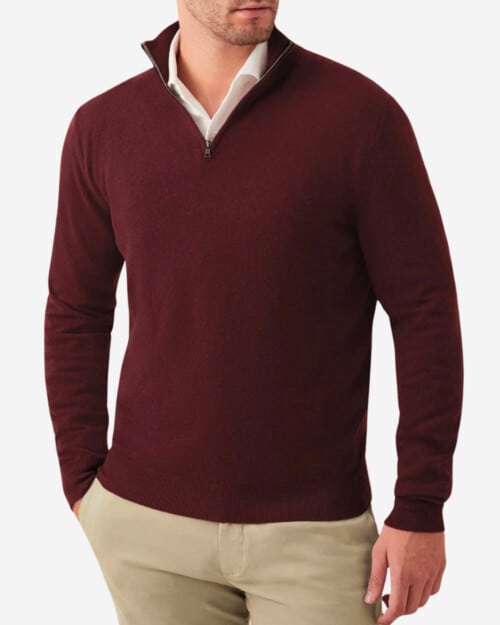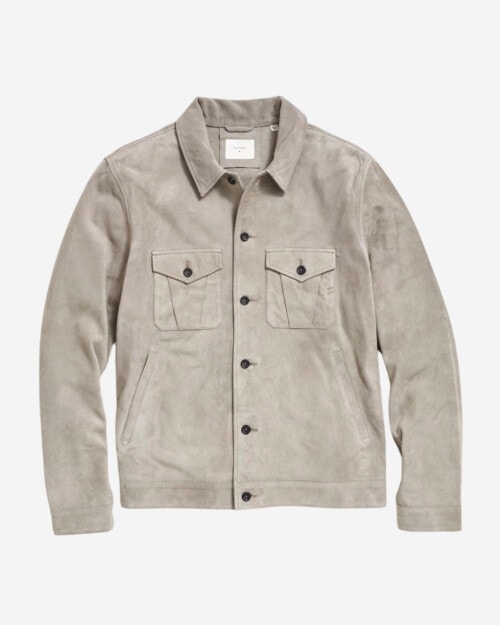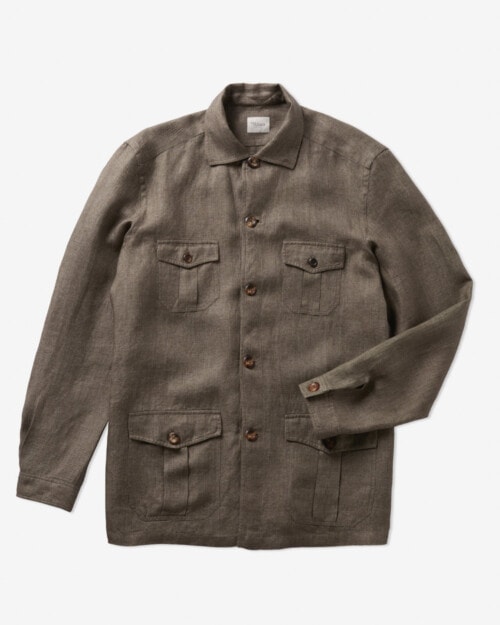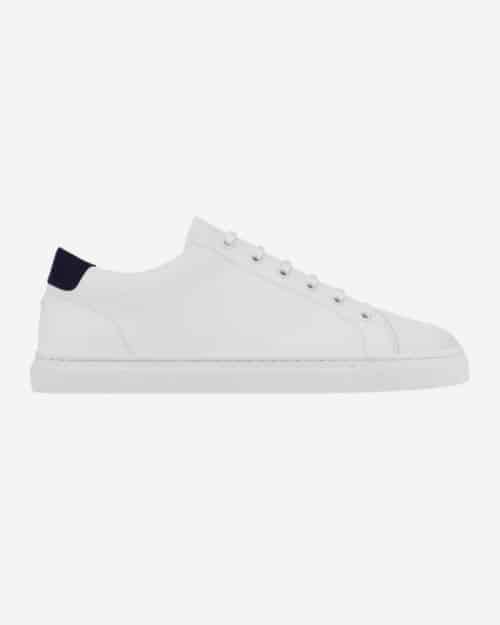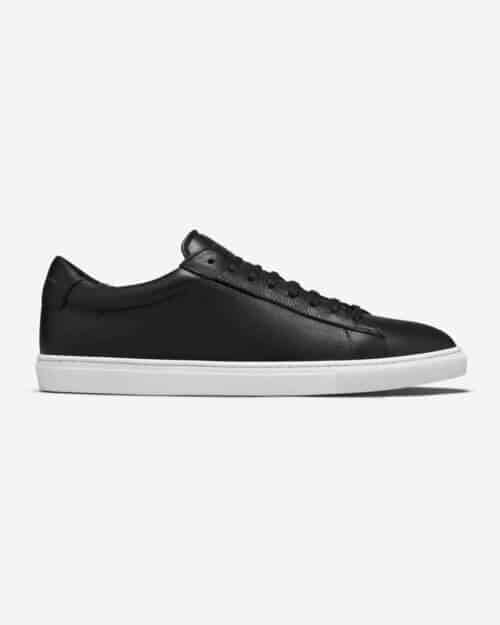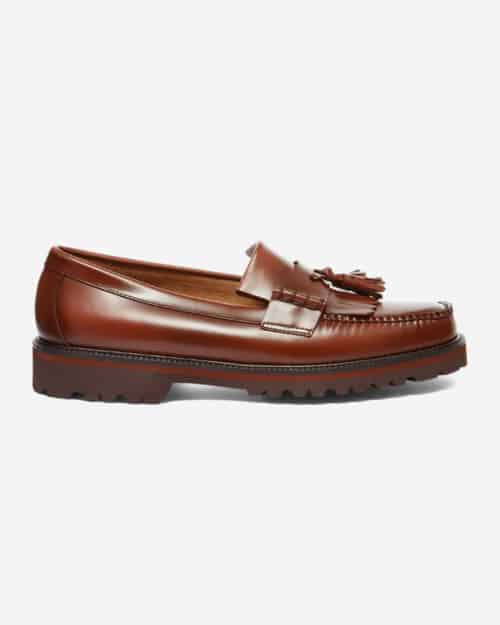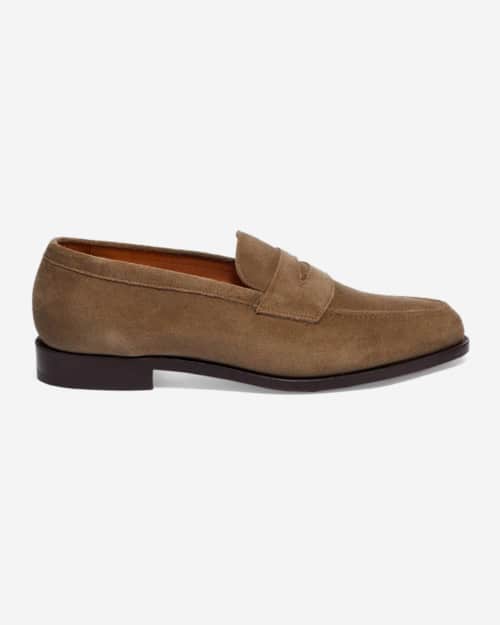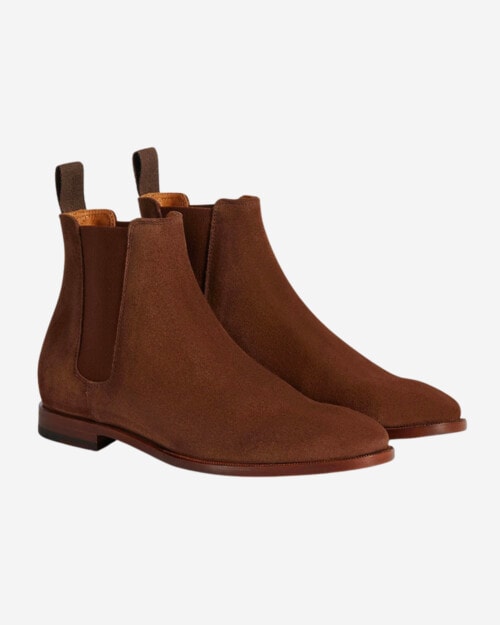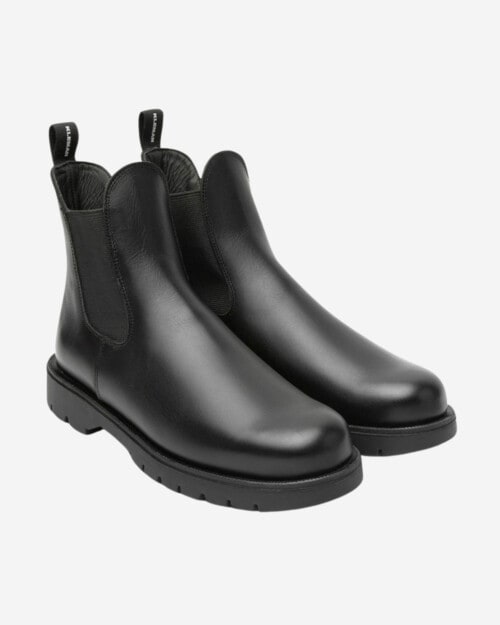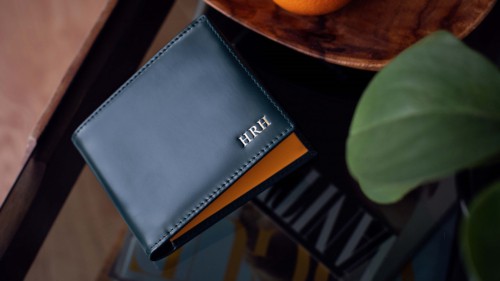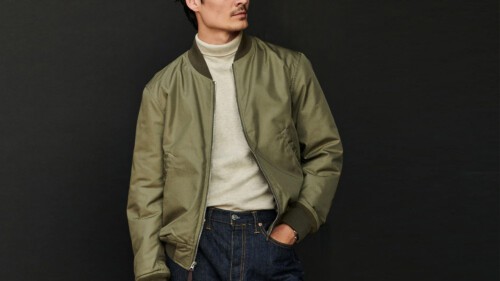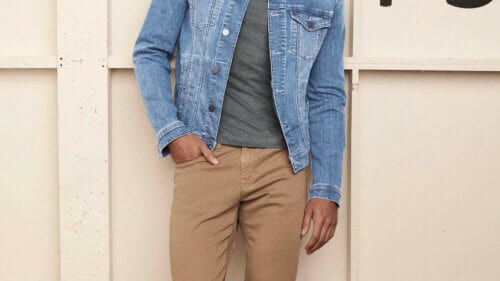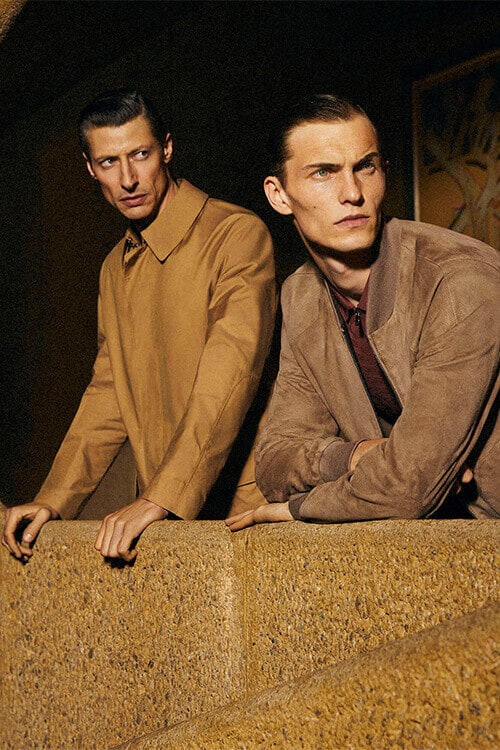The Modern Man’s 2024 Smart-Casual Guide: 50 Outfits That Get It Right
From the key garments and failsafe outfits to the biggest dos and don’ts, we demystify menswear's trickiest dress code.
Dress codes are supposed to make deciding what to wear simple, but that’s not always the case. Two words: smart casual. This seemingly self-contradictory term will cause most men a bit of confusion at some point in their lives. It’s so vague, so easy to misinterpret and so hard to pin down. It has also changed a lot over the past few decades, to muddy the waters further.
Smart-casual style is all about looking put together without being overdressed. It’s about balancing two opposing menswear forces to create something new for those awkward in-between occasions where a suit would be overkill, and a T-shirt and sneakers too sloppy. But there’s a lot of room for interpretation, which is where most of the uncertainty around the smart casual dress code stems from.
To nail smart casual, it’s important to understand it fully first. From the key garments and failsafe combos to the biggest dos and don’ts, knowing these things will allow you to approach smart-casual dressing with complete and utter confidence – and when you’re confident, you look good.
With that in mind, this comprehensive guide to modern smart-casual style aims to demystify the notoriously tricky dress code while offering up some example outfits that strike the right balance.
What is the smart-casual dress code?
Smart casual is a broad term used to describe garments and outfits that sit between the ‘smart’ and ‘casual’ extremes. It’s relaxed and informal, but with a subtly sophisticated quality that casual outfits often lack. It’s safe, versatile and easy to wear – making it an excellent default setting for most men, the majority of the time.
So, what types of things fall into this category? Generally speaking, garments like Oxford shirts, unstructured tailoring, suede shoes and knitwear. There’s also scope to throw in sporty casual pieces like sneakers, polo shirts and bomber jackets, as long as they’re counterbalanced with a few smarter elements. Casual pieces should have a bit of refinement to them too – if you’re wearing sneakers, for example, think clean, minimal leather versions, rather than battered old Converse.
The goal is to look like you’ve made an effort, but not to the point of being obviously ‘dressed up’. Presentable, but stopping short of donning a three-piece suit and leather Oxford shoes. Get the balance right and it’s the perfect option for things like dates, dinners, evenings out, some job interviews, and even just day to day through the week.
The evolution of smart casual
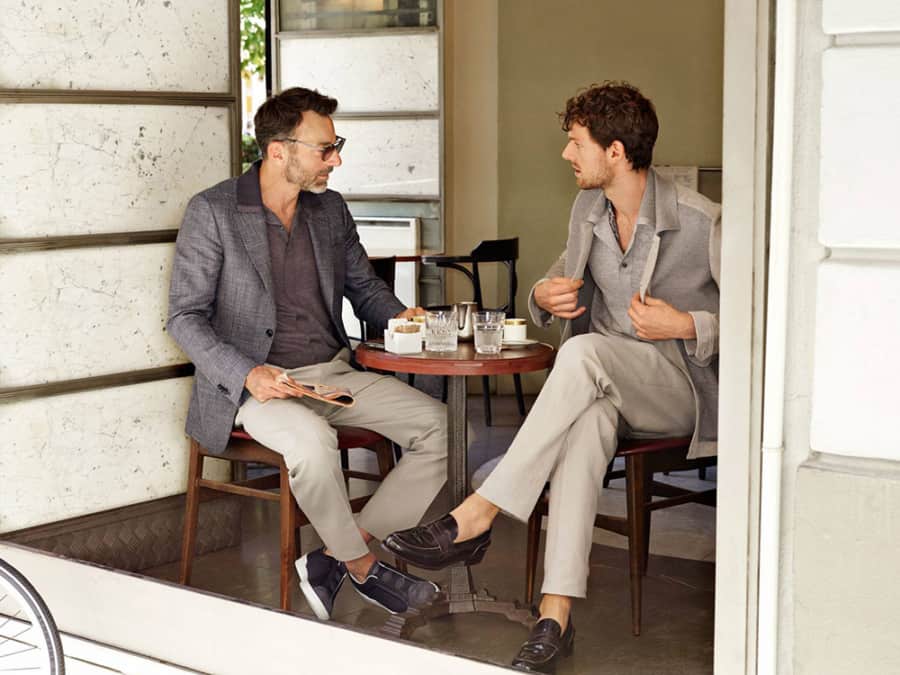
Canali
There was a time when smart casual just meant swapping the sneakers for some leather shoes, throwing a blazer on and calling it a day. Many men still treat the dress code this way today, but to take this approach is to do yourself a disservice. There’s so much more that can be done with smart casual, particularly now that dress codes have loosened up and begun to spill over into one another.
It’s not exactly clear where the smart-casual dress code emerged from, but what is certain is that it has changed a great deal over the years. Before the 1950s, the term was used to describe slightly less formal suits than those worn in the office. As the concept of casualwear developed, and garments like T-shirts and jeans became the norm, the dress code took on a slightly more relaxed, semi-formal feel, blurring the line between workplace attire and weekend wear.
It’s a trend that has continued ever since, with more casual and sporty elements creeping in over the years, to the point that it’s now perfectly acceptable to wear things like jeans, polo shirts and sneakers as part of the dress code… provided they’re elevated by smarter surrounding pieces.
Smart-casual dressing tips
Smart casual is one of the easiest dress codes to misinterpret, but following a few key tips and guidelines will help you nail it every time. Below are the most important points to keep in mind when you’re putting your next smart-casual outfit together.
Give both words equal attention
When styling a smart-casual look, it’s best not to lean too far in either direction. Place equal emphasis on the ‘smart’ and ‘casual’ elements of the outfit to achieve a balanced whole. That means throwing a blazer over a tracksuit isn’t going to cut it. Similarly, wearing a three-piece suit with loafers instead of Derby shoes doesn’t quite hit the brief either.
Aim somewhere between those two extremes and you should be bang on target.
Keep tailoring soft
Forgo the sharp, angular lines of traditional tailoring in favor of a softer look. This will give outfits a more relaxed feel, and won’t contrast uncomfortably with less formal pieces. A padded suit jacket with jeans looks awkward and unnatural.
Swap it for an unstructured blazer instead and the whole thing becomes much more cohesive.
Darker = smarter
Take this one with a pinch of salt, but as a general rule of thumb it tends to hold true. Take jeans, for example: stonewashed denim has a much more casual feel to it than crisp raw denim. Darker denim just looks smarter.
It’s not just jeans either. With the exception of shirts, darker pieces – from shoes to knitwear – usually come across as slightly dressier, so it’s always good to factor that in when piecing outfits together.
Consider texture
Alternating textures are a great way to give your outfits a subtle touch of character and draw the eye in. It’s OK to have several textures in a smart-casual outfit – nay, encouraged – but try to keep it balanced.
Generally speaking, rough, open fabrics lean casual, while flat, smooth materials look smarter. Try to incorporate elements of both for best results.
Don’t neglect footwear
Shoes can make or break a smart casual look, so pay them the attention they deserve. It should go without saying, but your footwear should be clean and well looked after. And that goes double if you’re going down the sneakers route.
Some key smart-casual footwear styles include desert boots, Chelsea boots, loafers, Derby shoes, minimalist sneakers and deck shoes. It’s hard to go wrong if you pick from that selection.
Accessorise accordingly
Things like hats, jewelry and luggage should be in keeping with the smart-casual theme. What’s the point in putting all of that effort into crafting the perfect smart-casual outfit only to let it down by slinging a battered old drawstring bag over the shoulder of your blazer?
Instead, go for something like a sleek leather folio or canvas holdall – still practical and functional, but with a smarter feel that ties in nicely with everything else.
Refine the basics
One of the tricks to nailing smart-casual style is ensuring your wardrobe’s core components are high quality.
Simple pieces like T-shirts, knitwear and jeans should be the best you can afford and, above all else, fit immaculately. A chain is only as strong as its weakest link, so make the effort to ensure that even the most basic garments don’t let you down.
Smart-casual outfits for men
Brown overshirt with white chinos
Brown and white or off-white is a great colour combination, boasting a degree of sophistication, while being very easy to style.
Smart chinos provide the clean smart backdrop in this case, while the overshirt and T-shirt combine to give the outfit an off-duty feel, reinforced by the casual Chelsea boots.
The monochrome look
Opting for an all-black ensemble is always a smart option, and flattering too, since it makes you appear slimmer.
This look has been curated with refinement: the tailored trousers are sharp and sublime, bookended by the slick belt and loafers, while the fitted polo shirt plays down the formality.
Grey tonality
Just as in the all-black look above, this particular outfit opts for tonal grey garments for a touch of casual uniformity. It’s casual, minimalist, and easy to wear.
The tapered linen trousers bring the texture, while the soft crew-neck jersey injects a healthy dose of sports luxe.
Tobacco and black
While these two colors make for great dance partners, what we love about this look is the edgy silhouette, which offers a much more contemporary form of elegance.
The jacket’s unusually wide notch lapels are complemented by the baggy silhouette of the black pants, while the simple black T-shirt underlines the casual attitude.
White shirt and grey trousers
There are some summer outfits that you can always fall back on, and this is one of them. Grey tailored trousers are more casual than their black counterparts, especially when they come cropped such as these, emphasizing the leather loafers.
The linen camp collar shirt has been styled to perfection, with the rolled sleeves underlining the look’s off-duty sophistication.
The biker jacket
The leather biker jacket, in whichever guise you take it, has an undeniable ability to dress your look up or down, depending on what you’re wearing.
Layer it over track pants and a white T-shirt and it raises the bar, but wear it with a smart pair of tailored trousers and a black crew neck and you add a rebellious yet elegant edge to something that would be otherwise conservative.
Black field shirt with grey trousers
Field shirts and safari jackets are usually associated with khaki and olive drab tones, but when they are given a black finish, they can look inherently modern and smart.
This outfit hits the nail on the head, complementing the shirt with tapered grey wool trousers. Despite the monochromatic palette, the look succeeds because of the great textures.
Dressed-down tailoring
Relaxed tailoring and casual separates are a must to nail the smart-casual look.
This outfit combines a black polo shirt with beige tapered chinos and signs them off with white sneakers. All very contemporary. But adding the mauve blazer raises the bar a notch or three.
Neutral tones
If you’re ever in doubt, it’s always a good idea to be restrictive with your palette. It minimizes the risk of error and helps you to create a well-rounded, seamless look, as evidenced here.
Neutral tones are a good direction to take since they provide a great canvas for accents of color or pattern, such as this pistachio polo shirt and houndstooth blazer combo.
The collared jacket
The base of this outfit is almost identical to the previous one with regards to the trousers and polo shirt. Still, the attitude is entirely different thanks to the textural field jacket layered over the top.
The neutral tones provide a soft understated style, while the pop of contrast in the jacket defines the silhouette.
Country, but make it urban
The four-pocket field jacket is traditionally a countryside silhouette, but many brands have elevated it for a more urban setting by incorporating different colors and fabrics.
This light green style is perfect for the city, nicely complemented by the white jeans and tonal crew neck, while the suede boots add a slice of texture.
Navy cardigan with green cargo pants
Combining navy and green is always a good idea when constructing smart-casual looks since they complement each other wonderfully.
Given that both tones are quite understated, they make a good canvas for contrast accents to pop against – in this case, it’s a simple pink pinstripe shirt.
Layered white shirt with green chinos
Just as in the look above, a navy-green base combo does all the heavy lifting, while the addition of the unbuttoned white shirt lends the outfit a bold contrast.
The casual white shirt should be in everyone’s wardrobe, especially in fabrics such as linen and brushed cotton – both of which will lend your outfit texture and tactility.
The versatile zip-through
The zip-through top doesn’t get the credit it deserves for its versatility and ease of wear. As a smart-casual styling device, the knitted types in luxury fabrics such as merino and cashmere are useful since they can be smart, preppy or sporty depending on how you wear them.
This beige style, for example, elevates a bog-standard polo and jeans look thanks to its rich texture.
A blouson rather than a blazer
One very easy way to create a sophisticated smart-casual look is to take a pair of tailored suit trousers and a dress shirt, and instead of layering over a suit jacket or blazer, go for a textured collared jacket instead.
The jacket’s silhouette instantly changes the dynamic. Opting for a tonal ensemble – in this case blue – helps underline the smart aesthetic.
The zip-through redux
A similar zip-through as before but styled in a slightly different way – this time it’s zipped up and worn with an open collar to hint at the pink shirt underneath.
It’s a good business-casual office device that you can throw over a shirt and chinos or suit trousers to give your look a soft textural dynamic.
Navy, white and green
We’ve written before about the timelessness and elegance of the navy and white combination. However, to prevent it from looking too nautical, adding an olive green tone always works well.
In this instance, it comes by way of a smart notch lapel blazer. The knitted polo and navy suede sneakers complement one another and help make the outfit cohesive.
Great grayscale
The color grey gets an unfair rap for being boring or dull, but it’s an excellent choice when it comes to pulling together a sophisticated smart-casual look.
Combining well with both white and black, as well as a host of pastel tones, grey performs a minimalist role in the modern man’s wardrobe, as evidenced here.
A simple long-sleeved polo is worn with light grey pleated chinos and bookended with black loafers. Chic and effortless.
The black turtleneck
As garments go, the black wool turtleneck is unparalleled in its ability to add a sophisticated edge to smart-casual looks.
For whatever reason, it just works, especially with black jeans. In this case, the jeans, boots and leather jacket trio would be quite rugged, but the black turtleneck gives the outfit a certain finesse.
Midnight navy and beige
Top-to-toe navy always makes for an elegant smart-casual ensemble as this look nicely demonstrates. The trousers can be tailored to perfection or wide-leg and contemporary – what will really set the tone of the look is the jacket’s silhouette.
In this case, the workwear-inspired short collared jacket ensures the look is rooted in modern functionality, while the beige crew neck delivers texture and contrast in equal measure.
Foolproof men’s smart-casual attire
Still struggling for inspiration? Stick to one of the tried-and-tested templates below and take the hard work out of it. While all quite different, these four interpretations of the dress code have the perfect ratio of smart to casual, making them perfect for just about anything short of a full-blown formal event.
Suit separates
At the smarter end of the smart-casual spectrum, we have suit separates. These are tailored pieces mixed and matched to create contrast within the outfit, which makes for a less formal look than being head-to-toe in one colour.
The word ‘contrast’ is key here. To get it right, the jacket and trousers should stand out against one another. If they’re too similar in shade, it won’t have the same effect (and can look like you made a mistake when reaching for your suit).
Some colour combos that always work well include: navy blazer + off-white trousers, grey blazer + navy trousers, beige blazer + grey trousers, light grey blazer + charcoal trousers, and green blazer + beige trousers.
Ivy League
Preppy style is enjoying a resurgence, which spells good news for your smart-casual ensembles. By definition, the Ivy League aesthetic is smart casual, and so many of the pieces translate well when pulling together this sort of outfit. Think OCBDs, loafers, deck shoes, cardigans, polo shirts and chinos.
Another core part of the preppy look is color and pattern. Bold stripes, madras checks and collegiate lettering are all signatures of the style, so incorporate them (sparingly) to help bring your smart casual attire to life.
Dressed-down tailoring
One particularly simple way to nail smart casual is to start off with a traditional suit and introduce casual pieces to dress it down.
This can work with any color, but for the sake of argument, let’s imagine a navy suit with a white poplin shirt and a pair of black leather Derby shoes. All that needs to be done to take this outfit from ‘smart’ to ‘smart casual’ is to swap the shirt for a tucked-in T-shirt or a knitted polo and trade the Derbies in for some minimalist sneakers or brown suede loafers.
By changing just those two details, the whole vibe of the outfit is completely transformed.
Minimalist
Stripped-back outfits can still look sharp. For a minimalist take on the dress code, stick to monochrome and neutral colours, keeping layering and accessorising to a minimum. Think grey wool trousers, black long-sleeve knitted polo and suede Chelsea boots.
To pull this off and make it look smart enough, the few garments you select should be high quality and fit like a glove. If in any doubt, things like trousers, shirts and tailoring can always be taken to your local alterations shop to be tweaked by a professional.
Key smart-casual pieces for 2024
Countless garments can be worn as part of a smart-casual outfit, but a few key pieces stand out and embody what the dress code is all about. These are the most versatile, failsafe and timeless smart-casual garments, and the ones no man should be without.
Oxford cloth button-down (OCBD)
The Oxford-cloth button-down shirt (or OCBD for short) is perhaps the ultimate smart-casual garment. It features a similar cut and overall design to its dressier poplin counterpart, but with a textured fabric and additional details that give it a more informal feel.
It’s the sort of thing that can instantly pull an outfit together and make it look like you’ve made an effort. Wear it instead of a T-shirt to turn a bog-standard weekend fit from sloppy to sharp, or layer it under some knitwear to give a simple look a sense of depth.
Unstructured blazer
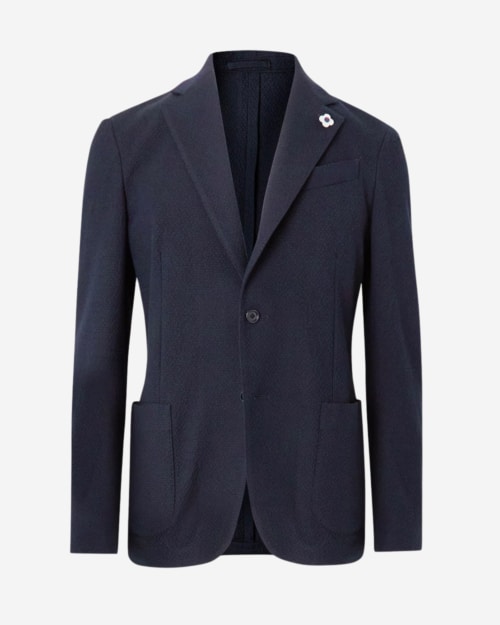
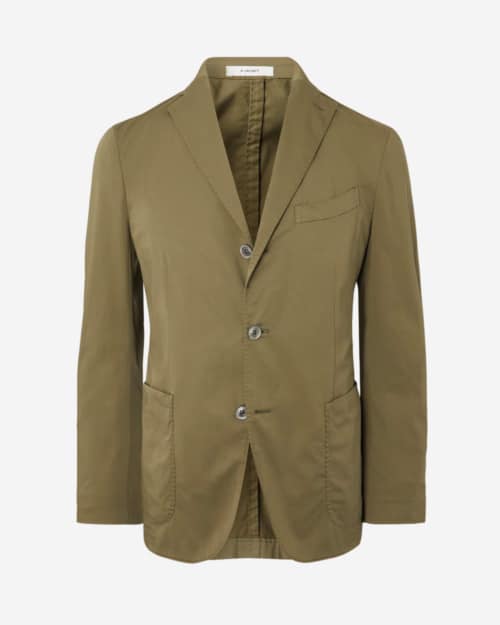
Some blazers have padding strategically placed to make the shoulders appear broader. These should be avoided when combining the jacket with less formal pieces like jeans, chinos and casual footwear.
Instead, look for blazers that are ‘unstructured’. These offer a more relaxed alternative to traditional suit jackets, with no padding, minimal lining and soft, natural shoulders. They still have the power to dress a look up, but won’t look jarring when worn next to casual-leaning garments.
Chinos
These preppy trousers occupy the middle ground between jeans and dress pants. They’ll happily combine with anything from T-shirts and sneakers to soft tailoring, making them the ideal candidate for your go-to smart casual legwear.
Wear them with a fine-gauge turtleneck, an overshirt and loafers for a contemporary take on smart casual, or team them up with an OCBD, deck shoes and a cardigan for a bit of mid-century Ivy League cool.
Polo shirt
The polo shirt first started life as a button-down collar shirt, invented by British officers stationed in India, before the French tennis icon René Lacoste later developed what we know to be the modern cotton piqué polo shirt.
That sporty version with the soft rolled collar is still as relevant today as it ever was, and is an essential part of the modern casualwear and sportswear canon of men’s clothing. But evolution hasn’t stood still with regards to the polo shirt, with both short-sleeve and long-sleeve styles developing a more elevated line of knitted options using luxury fabrics such as merino wool and cashmere.
That part of the polo shirt lineage has found home in the more sartorial and elegant spring/summer wardrobes. Whichever you prefer, both families of polos can be easily incorporated into a modern smart-casual outfit.
Turtleneck
Knitwear is an essential element of the smart/casual wardrobe, bringing vitality, color and texture to your outfits. One of the key knitwear silhouettes is the turtleneck, which has an innate masculinity and can be extremely versatile depending on the style.
On the smarter end of the turtleneck spectrum, you have fine-gauge fitted knits, woven to fit snugly over the torso to be worn beneath tailoring or a blouson.
The more off-duty styles tend to be chunkier knits, such as Aran styles with cable knit details. These styles are punchier, more colorful and better paired with denim and chinos than tailored pants.
Grandad collar shirt
A workwear icon, the grandad collar shirt has its origins in blue-collar life, back in the days when shirt collars were mostly detachable. Whether an act of rebellion or just sheer common sense, the working classes had little occasion for wearing ties, so they began to eschew wearing collars.
Then, in World War I, the grandad shirt became a standard issue undergarment. In the 50s, Indian Prime Minister Jawaharlal Nehru’s preference for muslin mandarin collars brought the shirt back into favor. Then four guys called John, Paul, Ringo and George did their best to promote it.
Today, it’s a great option to wear with relaxed tailoring and smart-casual attire.
Quarter-zip sweater
The quarter-zip sweater was originally conceived as a functional sportswear piece before being appropriated by collegiate types in the 50s and 60s, becoming part of preppy lore.
In recent years, the quarter-zip has found a new generation of admirers who have invested in the genre-mixing aesthetic of modern preppiness, with the likes of Aimé Leon Dore leading the way in how to style it in a contemporary way.
Collared jacket
‘Collared jackets’ is a broad and eclectic menswear genre, including everything from blousons to overshirts to safari jackets. Ultimately, what they all have in common is a certain smartness and refinement in the silhouette.
Naturally, the turned-down collar gives the jacket a formal start, and typically the jacket might borrow certain tailoring principles, too. However, the off-duty appeal comes from the relaxed or cropped silhouettes, as well as the fabrications, from cotton and linen to suede and wool.
Minimalist sneakers
It’s only really in the last decade or so that sneakers have become truly accepted as part of the smart-casual dress code. Still, to work, they have to have certain qualities about them. We’re talking a clean minimalist design, premium materials and a subtle, low-profile silhouette.
Suede can work, particularly in dark colors, but something leather in black or white tends to be best. Think Adidas Stan Smith if you’re on a budget, Common Projects Achilles Low if money’s no object.
Loafers
Loafers are comfortable, easy to wear, versatile and have a special ability to dress casual outfits up while bringing tailored looks back down to earth. They’re an invaluable tool in any man’s smart-casual footwear line-up and work equally well in suede or leather.
Loafers come in various styles, all of which are perfectly appropriate, but to keep it classic, a traditional penny loafer is our slip-on of choice.
Chelsea boots
Popularised by the Chelsea set in the 60s, the eponymously named leather shoes actually evolved from ankle boots designed for riding. The elasticated panel was invented to make it much easier to take on and off.
These days, Chelsea boots set the bar for smart-casual footwear, with just about every shoemaker and luxury fashion house making their own high-end versions using soft calfskin leather. The classic black styles have a certain rock ‘n’ roll appeal to them, which works well with tapered black jeans, whereas brown suede and neutral tone styles are more versatile, especially in this age of quiet luxury when texture and fabric quality are everything.
Smart casual FAQs
Hopefully the information in this guide has already answered your burning smart casual questions. But just in case, here are the answers to some of the most common queries men have about the dress code.
Are jeans smart casual?
Yes, with a ‘but’. Jeans can be smart casual but only if they fit well, are free from holes or distressed detailing, and aren’t too light in colour. That said, lighter washes can work so long as they’re styled well and balanced out with smarter pieces.
Are joggers smart casual?
Categorically, no. Joggers are not smart casual. It’s true that dress codes have relaxed, but joggers are still very much in sportswear/athleisure territory. The next best alternative that’s smart casual appropriate would be a pair of tailored drawstring trousers.
Are shorts smart casual?
Yes, shorts are perfectly acceptable as smart casual in the summer, just as long as they’re not too sloppy. That means a big no to athletic shorts and swim shorts, and a resounding yes to chino shorts, tailored shorts and similar. Remember to invest in some no-show socks, too.
Are T-shirts smart casual?
Not alone. However, a crisp white tee tucked into a pair of raw jeans and layered with an oxford shirt is unlikely to raise any eyebrows. It’s all about how it’s styled.
Does smart casual require a jacket?
No, absolutely not. This is one of the most common pitfalls men run into when approaching the dress code. Assuming a blazer must be worn in order for an outfit to be deemed smart casual will hold you back. That said, an unstructured blazer is a great tool to have at your disposal when it comes to crafting your smart casual looks.
Are suits smart casual?
They can be, but again, it’s all about how they’re styled. A two-piece suit dressed down with some knitwear or a polo in place of the shirt, and some minimalist sneakers or loafers in place of smart shoes will always be a solid option. It’s all about striking a balance between ‘smart’ and ‘casual’ without leaning too far in either direction.
Are sneakers smart casual?
These days, yes, sneakers can be smart casual. But they need to be the right kind. Stay away from anything overly sporty, with too much detail or excessive branding. Instead, stick to clean, uncluttered, minimalist styles in premium materials. Again, make sure they’re balanced out by dressier pieces elsewhere in the outfit.
Are polo shirts smart casual?
Much like T-shirts, polo shirts can be smart casual if worn in the right way. Try tucking one into a pair of chinos or dress trousers and layering an unstructured blazer or overshirt over the top.
Are hoodies smart casual?
No, hoodies are not smart casual. If you need something to wear as a mid-layer, focus on knitwear instead. A heavy gauge fisherman knit can do much the same job, albeit without the hood.
